– U.S. Fish and Wildlife Service ESA Basics, 50 Years of Conserving Endangered Species, 2023
“The law’s ultimate goal is to ‘recover’ species so they no longer need protection under the Endangered Species Act.”

December 28, 2023, marks the 50-year anniversary of the Endangered Species Act. Since the act became law five decades ago, most species listed under it have avoided extinction. Only a tiny fraction of listed species, however, have ever recovered and come off the list. The vast majority remain at risk, not quite plunging over the cliff to extinction, but not backing away a safe distance from the edge either.
This report presents 10 ideas to enhance the recovery of imperiled species in the future. It highlights wildlife that exemplify various aspects of endangered species policy and proposes specific reforms that would improve the act’s effectiveness at encouraging recovery over the act’s second half-century and beyond.
Introduction
By Jonathan Wood
Fifty years after its enactment, the Endangered Species Act may be simultaneously the nation’s most popular and controversial environmental law. The popularity is easy to understand. Its laudable goal of preventing extinction enjoys near-universal support, especially when it comes to charismatic animals such as bald eagles and grizzly bears. And the law has proven effective at achieving this goal, with 99 percent of listed species persisting to this day.
Only 3 percent of species ever listed as endangered or threatened have recovered.
If the statute’s popularity stems from its “why,” the controversy stems from its “how.” The Endangered Species Act has earned a reputation as “the pitbull of environmental laws.” Not only does it impose uniquely strict regulations, but as one landowner put it, “Once it gets ahold of you, it doesn’t let go.”1 Tate Watkins, “If a Frog Had Wings, Would It Fly to Louisiana?” PERC Reports 37, no. 1 (2018). The act’s regulatory powers—arguably the most powerful environmental law in the U.S. Code—can affect land use decisions across the country. And because two-thirds of listed species depend on private lands for habitat, these restrictions can be especially burdensome for private landowners.
Unfortunately, the law’s strictness complicates its ultimate goal of recovering species. By imposing stringent regulatory burdens wherever a rare species or its habitat are found, the law makes species liabilities that landowners would do well to avoid. This creates perverse incentives for landowners to preemptively destroy habitat before it attracts a rare species and the regulatory consequences that accompany it.2See, for example, Jonathan H. Adler, “The Leaky Ark: The Failure of Endangered Species Regulation on Private Land,” in Rebuilding the Ark: New Perspectives on Endangered Species Act Reform, ed. Jonathan H. Adler (Washington, D.C.: AEI Press, 2011). And because the act relies almost entirely on punitive regulatory provisions, it lacks positive incentives for landowners to undertake the proactive efforts necessary to restore habitat and recover species.
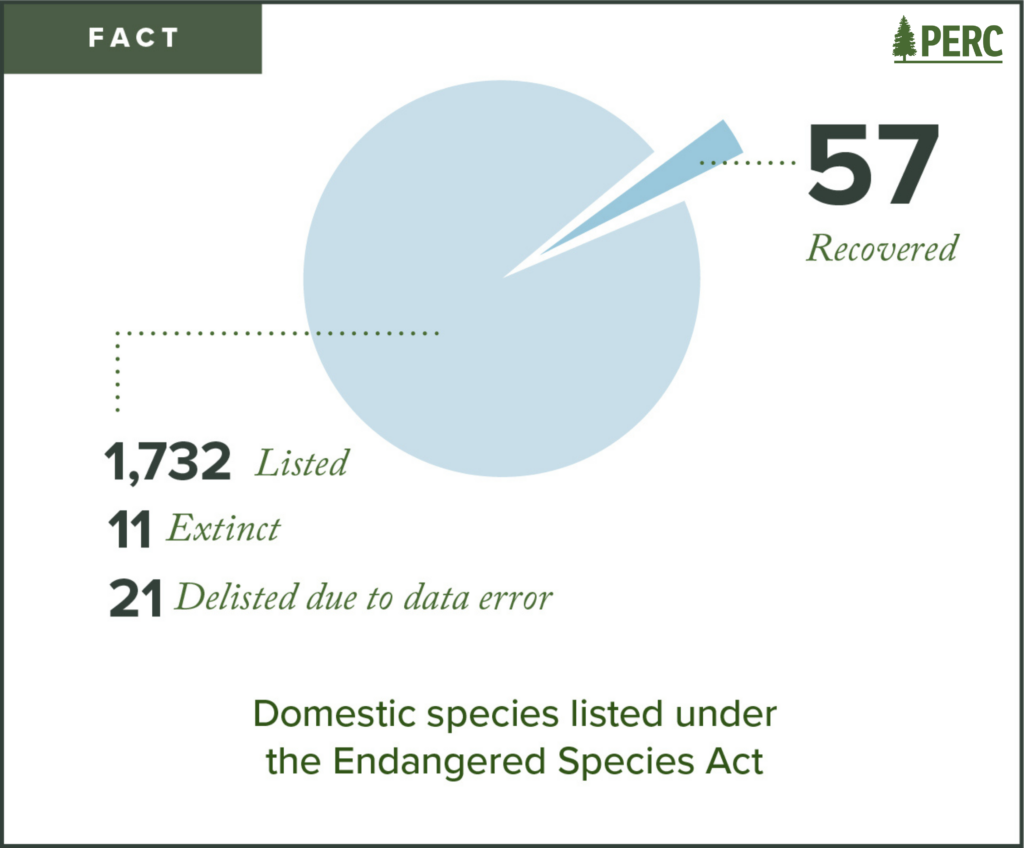
Consequently, the Endangered Species Act has a poor track record of recovery. Only 3 percent of species ever listed as endangered or threatened have recovered. And the U.S. Fish and Wildlife Service has reported that only 4 percent of listed species are even improving.3U.S. Department of the Interior, “2017/2018 Annual Performance Plan & 2016 Report” 15 (May 26, 2017). According to the agency’s own assessments, 85 percent of listed species have completed less than a quarter of their recovery objectives.4Katherine Wright and Shawn Regan, “Missing the Mark: How the Endangered Species Act Falls Short of Its Own Recovery Goals,” Property and Environment Research Center (2023) As a result, most species languish on the endangered species list for years, if not decades, longer than anticipated. The agency projected 300 species to recover by now, but just 57 have done so.5Wright and Regan, Missing the Mark.
Delivering on the Endangered Species Act’s promise to recover species “to the point at which” federal regulations “are no longer necessary” will require fixing the law’s perverse incentives and finding innovative, flexible ways to make imperiled species assets to the landowners who conserve them and restore their habitat.
Background on the Act
The Endangered Species Act charges the Fish and Wildlife Service and National Marine Fisheries Service to identify species currently in danger of extinction or at risk of facing that danger in the foreseeable future and list them as “endangered” or “threatened,” respectively. A listing generally triggers strict regulation of land where the species or its habitat is found, including a prohibition against the “take” of—any activity that harms—an endangered species. It also provides for extra scrutiny of federal activities that may affect a species or its “critical habitat,” areas of public or private land deemed essential to recovering a species. This scrutiny extends to any federal permitting of activities on private land under other federal laws, such as the Clean Water Act.
These prohibitions are so broad that they even implicate federal, state, and private conservation projects that may cause small, temporary harms to species but produce larger, longer-term benefits to species. For example, Endangered Species Act regulations have delayed forest restoration projects designed to protect habitat from catastrophic wildfires, discouraged the reintroduction of animals to suitable areas of habitat out of harm’s way, and stymied innovative market approaches that make species an asset to private landowners and businesses. The act also generally lacks positive incentives to compensate for these adverse regulatory consequences borne by landowners and others who accommodate rare species or conserve their habitat.
Instead of encouraging collaborative conservation, the law’s approach to regulating species and their habitats too often breeds conflict between federal agencies, states, landowners, and conservation groups, to the detriment of species. States and landowners often feel like regulatory targets for federal officials, rather than potential partners in conservation, discouraging them from cooperating in federal programs or even allowing access to information about the presence of species and their habitats. And some environmental groups are discouraged from seeking common ground with landowners due to the law’s invitation to sue to enforce its prohibitions, with the promise of lucrative attorney’s fees if successful.
Steering Toward Recovery
The key challenge in the Endangered Species Act’s second half-century will be to dramatically boost the rate at which endangered and threatened species recover. Fortunately, enterprising government officials, private landowners, and conservation organizations have developed a variety of innovative and voluntary tools to encourage and reward recovery efforts. If regulatory disincentives can be addressed and the relationships between many federal regulators, states, landowners, and conservationists mended, then these tools could be expanded to play a bigger role in species conservation.
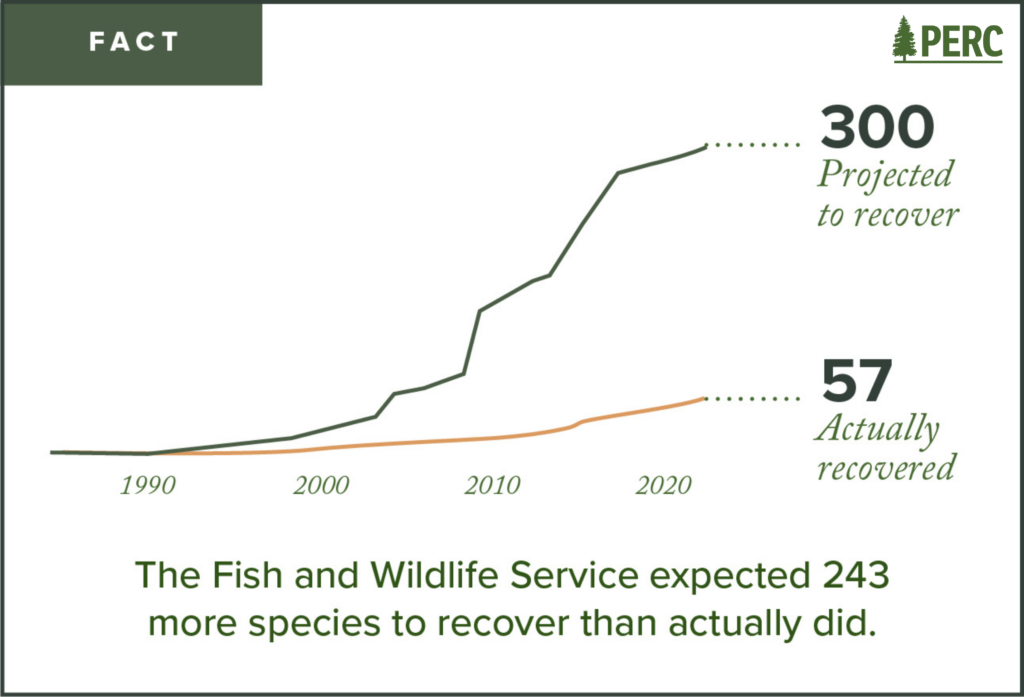
To help make that possible, this report explores 10 ideas to improve the law or its implementation to produce better incentives for proactive conservation efforts, encourage greater federal and state innovation, and—ultimately—make rare species an asset rather than a liability to the countless private landowners responsible for conserving and recovering them.

West Indian Manatee
Trichechus manatus
Est. population: 8,000 manatees
Listed in: 1972
Avg. weight: 800 – 1,200 lbs.
1. Restore the Two-Step Process
By Jonathan Wood
The West Indian manatee, often referred to as a “sea cow,” is actually a closer relative of the elephant. One of the first species listed under the Endangered Species Act, Florida’s official marine mammal numbered only a few hundred in the early 1970s.6U.S. Department of the Interior, “Manatee Reclassified from Endangered to Threatened as Habitat Improves and Population Expands – Existing Federal Protections Remain in Place,” Press Release, March 30, 2017. Loss of natural springs and other warm-water habitats has been the primary threat to the species.
Fortunately, the manatee’s popularity has spurred the state, landowners, and conservation groups to invest in proactive habitat conservation and restoration. Save Crystal River, a local conservation nonprofit, has spent years restoring more than 800 natural warm-water springs gummed up by algae and sediment, planting sea grass, and removing phosphorus to improve water quality. These and other investments have paid off. The population has grown to nearly 8,000 and expanded into more of its historical range on the East and Gulf Coasts.7Florida Fish and Wildlife Conservation Commission, “Florida Manatee Program,” accessed April 15, 2023, https://myfwc.com/wildlifehabitats/ wildlife/manatee/.
Citing the results of these recovery efforts, the U.S. Fish and Wildlife Service updated the species’ status from endangered to threatened at Save Crystal River’s urging in 2017. While this seemed like a cause for celebration, the service quickly doused such hopes. It announced that the status upgrade would not result in any change in federal regulation, with one official even dismissing as a “misperception” that endangered and threatened are distinct classifications.8Patricia Sagastume, “Reclassifying Florida Manatees: From Endangered to Threatened,” Al Jazeera America, August 8, 2014.
The two-step approach aligns the incentives of landowners with the interests of rare species.
The story of the manatee demonstrates a significant shortcoming in the Fish and Wildlife Service’s implementation of the Endangered Species Act. Rather than using the law’s two classifications to motivate and reward recoveries, the agency has generally treated all listed species the same. This undermines the incentives Congress originally built into the law, which were intended to provide regulatory relief as a species’ status moves from endangered to threatened.
Recently, the agency restored the law’s original two-step approach to encourage greater recovery efforts, but that reform may soon be reversed, to the detriment of states, tribes, landowners, and vulnerable species such as the manatee. Today, more investments are needed to improve water quality and restore the sea grass that the species relies on. But the service’s failure to reward past efforts may hinder further recovery efforts.
Recovering Congress’s Original Intent
In addition to designating a species currently at risk of extinction as “endangered,” the Endangered Species Act provides for the listing of “threatened” species that are likely to become endangered in the foreseeable future.916 U.S.C. §§ 1532(6), (19), 1533(a). Congress’s intent in creating this category was to provide a measure of protection for species before they reached the precipice of extinction.
These categories were intended to provide different degrees of regulation for endangered and threatened species commensurate with the threats they face. Most notably, the strict prohibition against private activities that harm members of a species applies to endangered species but not threatened species.1016 U.S.C. § 1538(a). That prohibition, known colloquially as the take prohibition, covers not only activities that intentionally harm endangered species but also those that incidentally do so, including routine land-use activities like farming, timber harvesting, and home building. It even applies to activities intended to benefit species, like relocating animals to better habitat or temporarily disturbing them during habitat restoration.
For threatened species, Congress authorized the Fish and Wildlife Service and National Marine Fisheries Service to issue regulations prohibiting take if “necessary and advisable for the conservation” of the species.1116 U.S.C. § 1533(d). According to Senator John Tunney (D-CA), the Senate floor manager for the bill that became the Endangered Species Act, Congress expected “[t]he two levels of classification [to] facilitate regulations that are tailored to the needs of the animal while minimizing the use of the most stringent prohibitions.” Indeed, states were expected “to use their discretion to promote the recovery of threatened species and Federal prohibitions against taking must be absolutely enforced only for those species on the brink of extinction.”12Congressional Research Service, A Legislative History of the Endangered Species Act of 1973, as Amended in 1976, 1977, 1978, 1979, and 1980 (Washington: G.P.O.), 358.
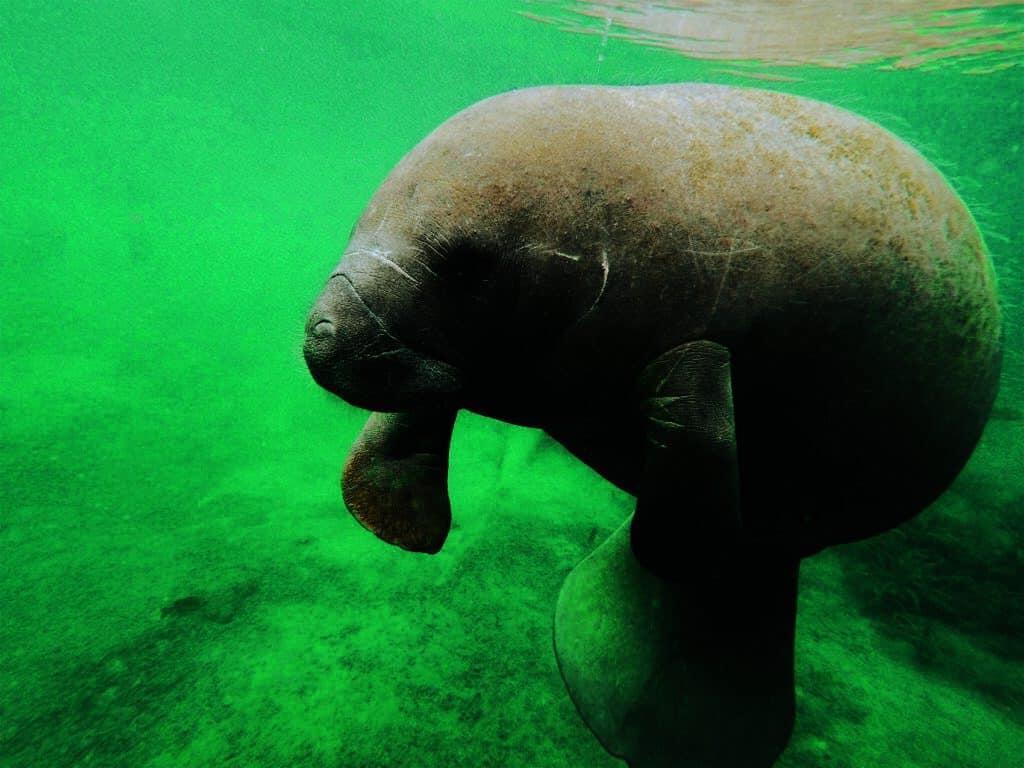
Losing the Distinction
Shortly after the Endangered Species Act was enacted, the Fish and Wildlife Service issued a regulation eliminating any regulatory distinction between endangered and threatened species. According to this “blanket” rule, all of the prohibitions for endangered species automatically apply to threatened species unless the service issues a separate rule relaxing them for a particular species.13Reclassification of the American Alligator and Other Amendments, 40 Fed. Reg. 44412, 44414 (September 26, 1975) rescinded by Regulations for Prohibitions to Threatened Wildlife and Plants, 84 Fed. Reg. 44753 (August 27, 2019). These threatened species rules are commonly referred to as “4(d) rules” after the provision of the act under which they are issued. The blanket rule is why the manatee’s status upgrade did not result in any regulatory reward for those who contributed to the recovery.
The blanket rule has contributed to the Endangered Species Act’s anemic recovery rate by undermining incentives for states, tribes, private landowners, and others to conserve and recover listed species. Under the statute’s original two step-process, landowners who restore habitat and contribute to a species recovering from endangered to threatened are rewarded by the removal of the take prohibition and its consequences. Likewise, landowners would be encouraged to prevent a threatened species’ further slide because that would trigger stricter regulations. In this way, the two-step approach aligned the incentives of landowners with the interests of rare species. Under the service’s “blanket rule” approach, landowners are made indifferent to a species’ status.
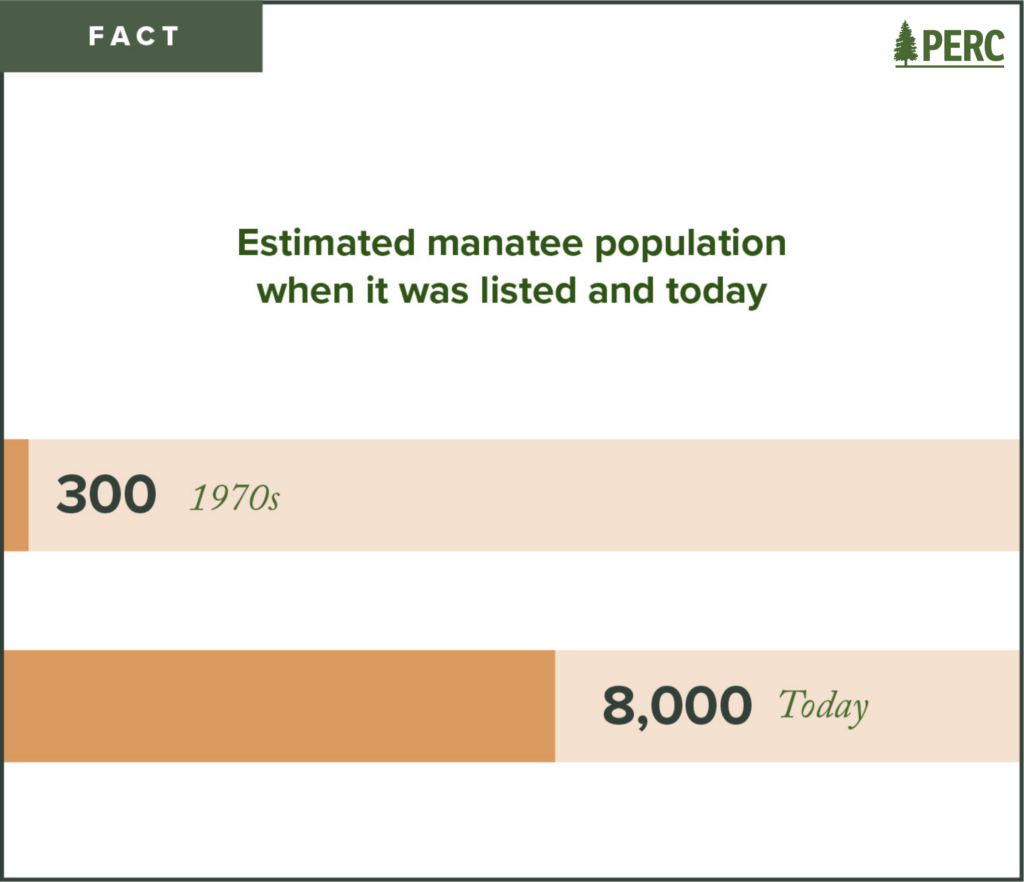
The blanket rule also undermined Congress’s expectation that states would take the lead in developing innovative programs to recover threatened species. Because the rule prohibits even beneficial activities if they involve relocating an animal, disturbing it, or temporarily damaging its habitat to improve it, many things states might do to contribute to threatened species’ recovery require federal permission. The blanket rule likewise deprives states of flexibility to manage conflicts between threatened species and other values.
Fortunately, the Fish and Wildlife Service has recently moved away from the blanket rule. The Obama administration discarded the blanket rule in favor of tailoring regulations to individual threatened species more than “nearly every other presidential administration,” according to a Defenders of Wildlife report.14Ya-Wei Li, “Section 4(d) Rules: The Peril and the Promise,” Defenders of Wildlife White Paper (2017). The Trump administration formalized this shift by rescinding the blanket rule in 2019.15Endangered and Threatened Wildlife and Plants; Regulations for Prohibitions to Threatened Wildlife and Plants, 84 Fed. Reg. 44753 (August 27, 2019). Since then, the service has considered what regulation would be best for each threatened species.
In 2023, the Biden administration proposed reinstating the blanket rule, despite the fact that the Fish and Wildlife Service has been consistently declining to apply endangered-level regulations for threatened species. For each of the 14 animals listed as threatened during the Biden administration, the service has rejected endangered-level regulation in favor of tailored rules.16See 88 Fed. Reg. 21844 (April 11, 2023) (Bracted Twistflower); 88 Fed. Reg. 19004 (March 30, 2023) (Egyptian tortoise); 88 Fed. Reg. 14794 (March 9, 2023) (Longsolid and Round Hickorynut); 87 Fed. Reg. 76882 (December 15, 2022) (whitebark pine); 87 Fed. Reg. 73655 (December 1, 2022) (Puerto Rican Harlequin Butterfly); 87 Fed. Reg. 72674 (November 25, 2022) (lesser prairie chicken); 87 Fed. Reg. 67380 (November 8, 2022) (sickle darter); 87 Fed. Reg. 64700 (October 27, 2022) (emperor penguin); 87 Fed. Reg. 546 (January 5, 2022) (Panama City crayfish); 86 Fed. Reg. 72394 (December 21, 2021) (Hermes Copper butterfly); 86 Fed. Reg. 64000 (November 16, 2021) (Atlantic pigtoe); 86 Fed. Reg. 48545 (August 30, 2021) (Bartram’s Stonecrop); 86 Fed. Reg. 30688 (June 9, 2021) (Neuse River waterdog). This is consistent with the National Marine Fisheries Service’s experience, which has never had a blanket rule. Over the last 50 years, that agency has found it appropriate to extend endangered-level regulations to threatened species less than 3 percent of the time.17Li, Section 4(d) Rules.
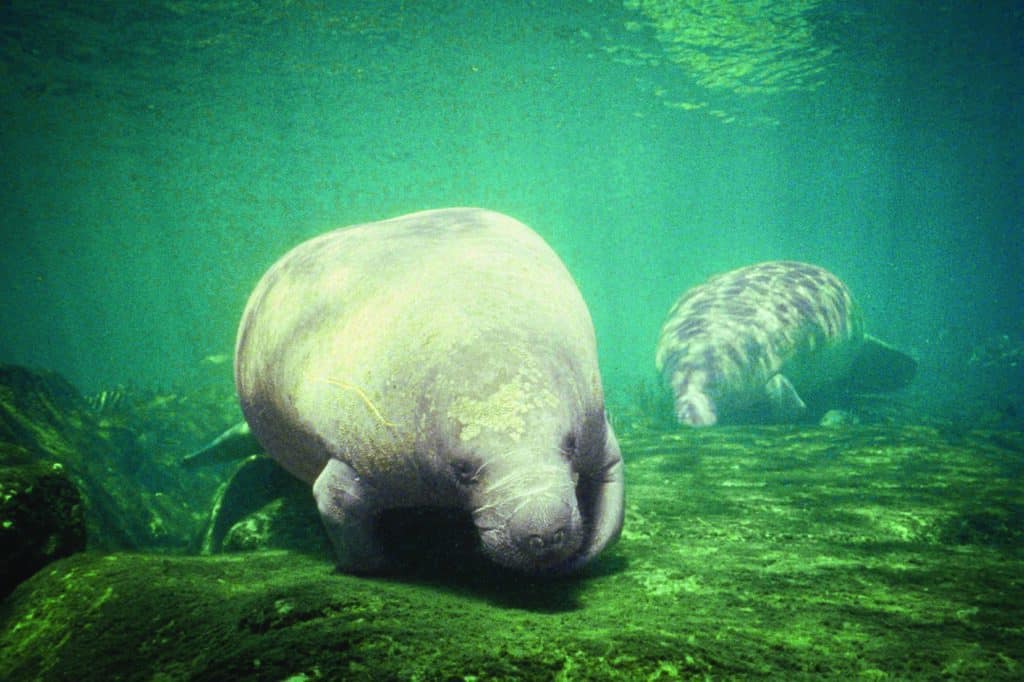
Turn the Tide
The Endangered Species Act’s two-step process was intended to encourage states, tribes, and landowners to recover endangered species with the promise that regulations would lighten as a species’ status is upgraded to threatened. But, for most of the law’s 50 years, that hasn’t been the case, leading to a disappointingly low rate of recovering species. Restoring and sticking with the statute’s original intent better aligns the incentives of states and landowners with the interests of rare species.
Recovery Recommendations
Endangered and threatened species are distinct categories that require different conservation approaches. Regulating these two categories the same makes states, tribes, and landowners indifferent to species’ status. To boost species recoveries, we need positive incentives, not indifference, to encourage proactive recovery efforts.
1. Restore the Endangered Species Act’s two-step process.
The blanket rule undermined the Endangered Species Act’s design and discouraged the recovery of species. The Fish and Wildlife Service should retain the act’s original two-step process to enhance incentives for species recovery. Congress should also reiterate that the take prohibition should be absolutely enforced only for species on the verge of extinction. By committing the service to honor the statute’s two-step approach, we can tailor regulations to match a species’ particular needs and better align the incentives of states, tribes, and landowners with the interests of species.
2. Empower states to lead on conserving threatened species.
Congress expected states to take the lead on conserving and recovering threatened species. It even gave states a means of vetoing any federal regulations the Fish and Wildlife service might issue for threatened species within their borders. And the Service has adopted a policy encouraging states to develop conservation plans and avoid the need to list a species. The blanket rule, however, undermined state conservation plans and relegated states to merely helping implement federal decisions about how to conserve species. States have repeatedly expressed interest in returning to their proper role in recovering threatened species. The federal government should let them.
3. Clarify the line between endangered and threatened species.
If a species’ listing as threatened results in reduced regulation, that may lead to pressure for the service to misclassify species, especially by interest groups that seek to manipulate the listing process to increase or decrease regulation. This could worsen the already politicized listing process. Therefore, Congress or the Fish and Wildlife Service should clarify how immediate and likely an extinction threat a species must face to merit an endangered listing, using as objective and quantitative a standard as possible.
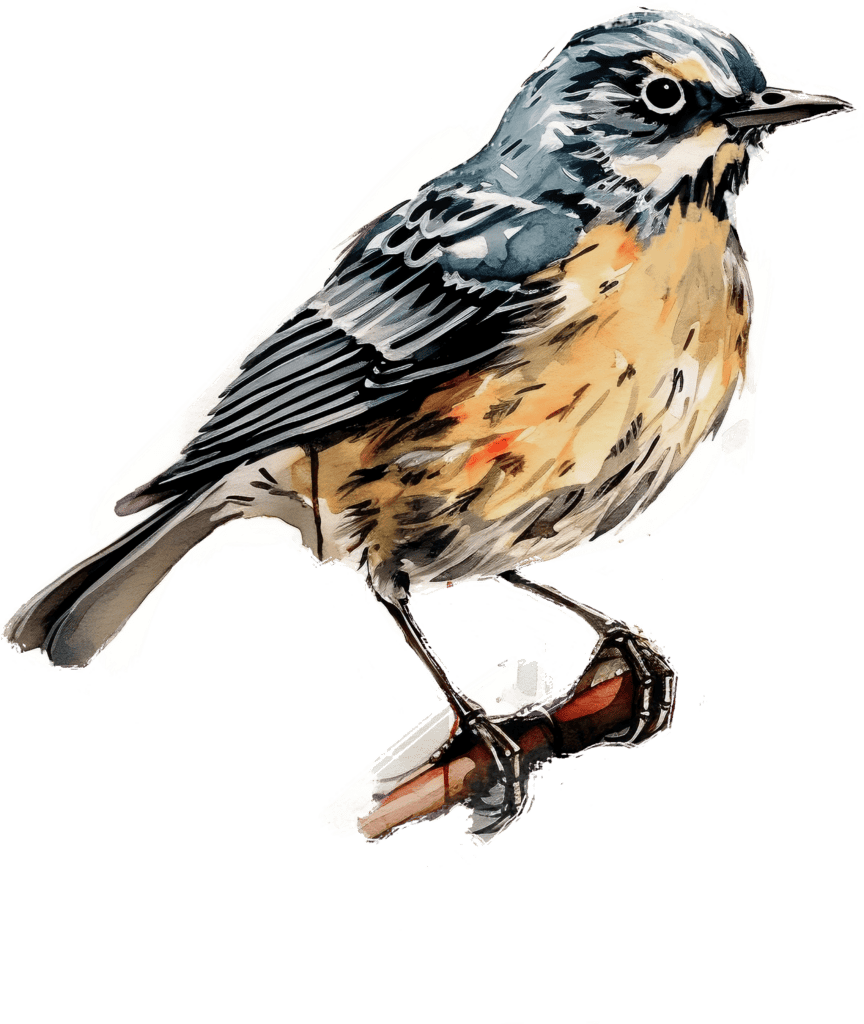
Kirtland’s Warbler
Setophaga kirtlandii
Est. population: 2,245 pairs
Listed in: 1973
Very picky about breeding habitat.
2. Plan for Successful Recovery
By Shawn Regan
The distinctive call of the Kirtland’s warbler once echoed across the jack pine forests of northern Michigan. But by the middle of the 20th century, the forests became much quieter, as the songbird’s numbers plummeted to frighteningly low levels. When the Endangered Species Act passed in 1973, only 200 remained, spurring the federal government to include the warbler on its original list of endangered species.
Fortunately, unlike most endangered species, the Kirtland’s warbler recovery effort was a resounding success, partly thanks to careful planning. A broad coalition of conservation partners cooperated with the U.S. Fish and Wildlife Service to devise the agency’s recovery plan for the warbler in 1976. The plan, which was updated in 1985, helped chart a path to the bird’s recovery in 2019.18Endangered and Threatened Wildlife and Plants; Removing the Kirtland’s Warbler From the Federal List of Endangered and Threatened Wildlife, 84 Fed. Reg. 54436, 54463 (October 9, 2019). Today, the song of the Kirtland’s warbler, once on the verge of being silenced, still rings out in northern Michigan.
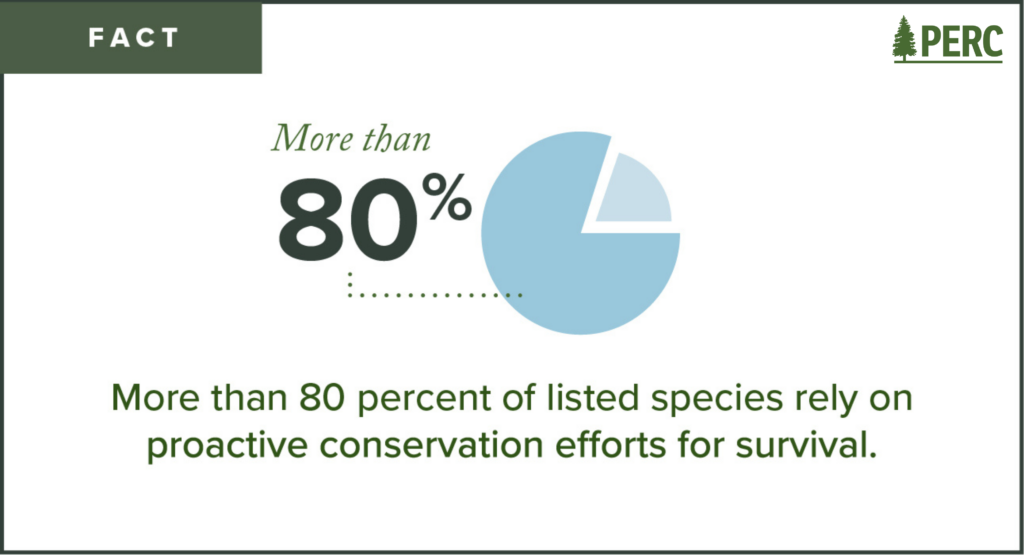
Recovering the species wasn’t easy. The Kirtland’s warbler requires ongoing human management to maintain its habitat.19Carol I. Bocetti et al., “Using Conservation Management Agreements to Secure Postrecovery Perpetuation of Conservation-Reliant Species: The Kirtland’s Warbler as a Case Study,” BioScience 62, no. 10 (2012). The bird breeds only in young jack pine forests, which were once sustained by frequent wildfires. But by the late 20th century, decades of fire suppression had altered forest conditions, reducing the warbler’s habitat. Meanwhile, a rival species—the brown-headed cowbird—began to flourish as land in the region was cleared for farming. Cowbirds invade warbler nests, laying eggs that outcompete the other nestlings.
To address these challenges, the U.S. Fish and Wildlife Service worked with state agencies, conservation groups, and private landowners to implement proactive recovery actions outlined in the warbler’s recovery plan. These collaborative conservation efforts restored warbler habitat by harvesting older trees, conducting prescribed burns, and replanting jack pine seedlings at regular intervals. Partners also trapped and removed brown-headed cowbirds, enabling the warbler population to eventually exceed its population goal of 1,000 breeding pairs.
Unfortunately, the warbler’s recovery is the exception, not the rule. Most endangered species languish on the list, never quite reaching recovery targets. Even if they do, some species remain listed long after they have met or exceeded recovery goals.20See Chapter 3 on fixing the Endangered Species Act’s off-ramp. Moreover, many species lack recovery plans altogether or only get them long after they have been listed. This undermines recovery efforts and makes success stories like the Kirtland’s warbler all too rare.
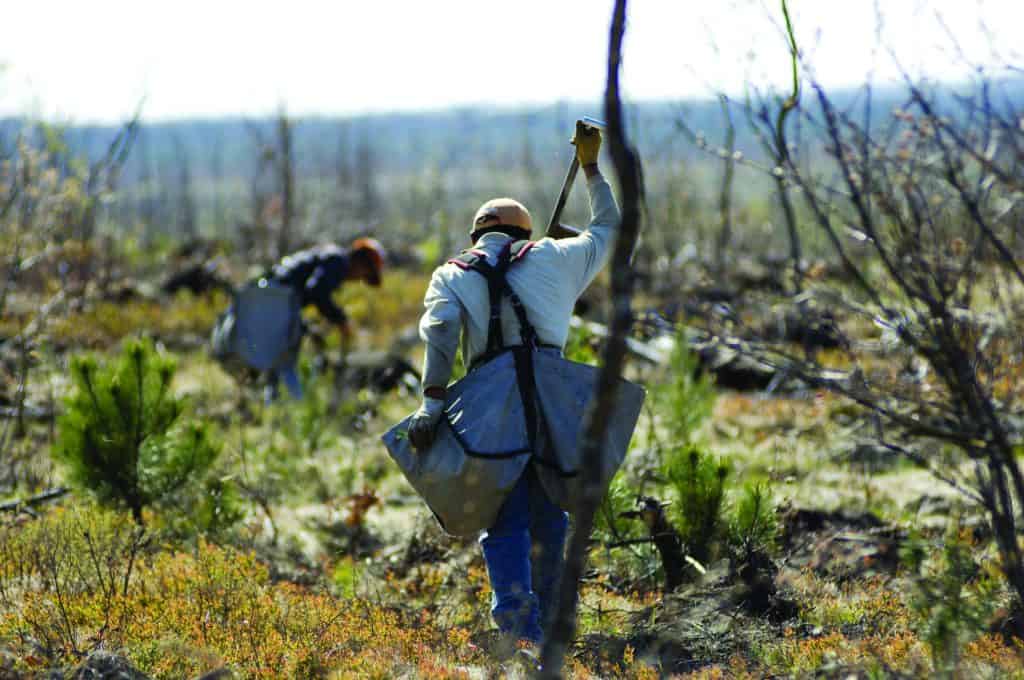
Planning Is Essential
The Endangered Species Act’s ultimate goal is to recover species to the point where they no longer need federal protections. To facilitate the recovery and delisting of endangered species, Congress directed the Fish and Wildlife Service and National Marine Fisheries Service to develop recovery plans for listed species and review their progress at least every five years.2116 U.S.C. §§ 1533(f), (g). These plans outline actions necessary for recovery and inform many subsequent decisions that affect a species.
More than 80 percent of listed species rely on proactive conservation efforts for survival.
Recovery plans can help motivate the specific actions needed to recover species. This is especially important for the more than 80 percent of listed species that rely on proactive conservation efforts for survival.22J. Michael Scott et al., “Conservation-Reliant Species and the Future of Conservation,” Conservation Letters 3, no. 2 (2010): 91-92. A 2007 study found that the act’s protections are only beneficial when combined with funding to implement species-specific recovery plans.23Paul J. Ferraro, Craig McIntosh, and Monica Ospina, “The Effectiveness of the US Endangered Species Act: An Econometric Analysis Using Matching Methods,” Journal of Environmental Economics and Management 54, no. 3 (2007): 245-61. In other words, an endangered listing alone does little or nothing to boost most species’ recovery prospects. Proactive conservation efforts, such as those identified in recovery plans, are essential for achieving the act’s stated goals.24Temple Stoellinger et al., “Improving Cooperative State and Federal Species Conservation Efforts,” in The Codex of the Endangered Species Act: Volume II: The Next Fifty Years, eds. Lowell E. Baier, John F. Organ, and Christopher E. Segal (Lanham, MD: Rowman & Littlefield, forthcoming 2023).
Ready, Fire, Aim
One of the Endangered Species Act’s shortcomings can be summed up by Benjamin Franklin’s observation that “failing to plan is planning to fail.” All too often, the act fails by disregarding Franklin’s advice. A recovery-focused approach should prioritize the development and implementation of practical and effective recovery plans so that vulnerable species have the best possible chance of making a comeback.
Regrettably, that has not been the case over the past half century. One-third of listed species have no recovery plan, and half of all plans were not developed until more than five years after the corresponding species was listed.25Based on analysis of U.S. Fish and Wildlife Service’s Environmental Conservation Online System database. Moreover, most existing recovery plans are far out of date, and the Fish and Wildlife Service has often lagged far behind schedule in reviewing its progress toward recovering listed species.26Jacob Malcom and Ya-Wei Li, “Missing, Delayed, and Old: The Status of ESA Recovery Plans,” Conservation Letters 11, no. 6 (2018): e12601. See also Jacob Malcom and Mae Lacey, “Timeliness of Five Year Reviews under the Endangered Species Act,” Defenders of Wildlife (2019).
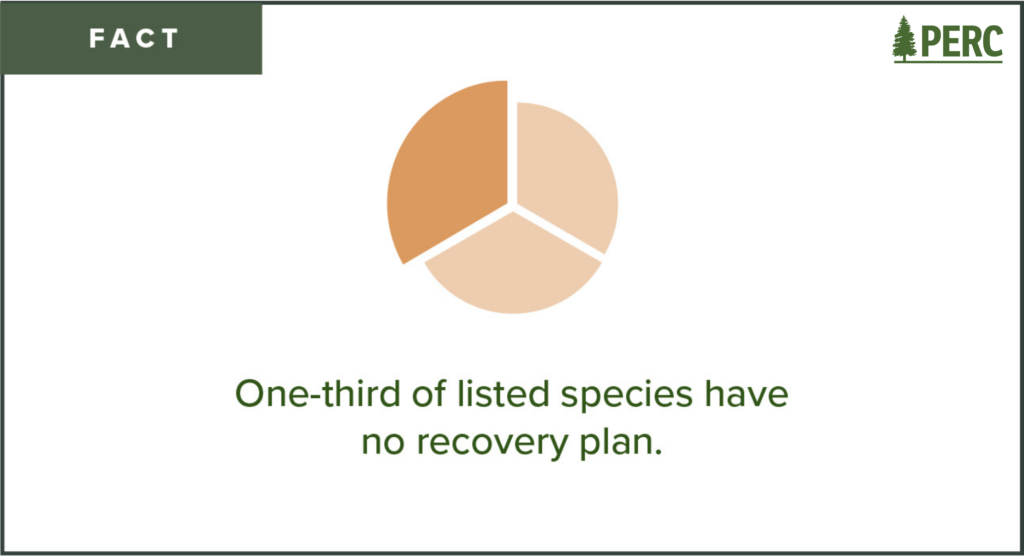
Even when recovery plans are developed, they come only after the agencies have first imposed punitive regulations governing listed species, including regulations for threatened species and critical habitat designations. In this way, regulatory decisions are made before the specific needs of a species are identified during recovery planning and often do not account for how those decisions will affect landowners’ incentives to recover species. This “ready, fire, aim” strategy limits the effectiveness of these regulatory provisions and can alienate landowners who steward habitat, thereby compromising crucial partnerships that may be needed to recover imperiled species.
This backward approach helps explain why so many species struggle to meet recovery targets. According to the Fish and Wildlife Service’s own assessment of its progress toward meeting stated recovery goals, 85 percent of species have completed or partially completed less than a quarter of their recovery objectives.27Katherine Wright and Shawn Regan, “Missing the Mark: How the Endangered Species Act Falls Short of Its Own Recovery Goals,” Property and Environment Research Center (2023). Given this lack of progress, it’s not surprising that only 57 domestic species have been delisted due to recovery in the past 50 years, compared to 300 species the service projected should have recovered by now.28Wright and Regan, Missing the Mark.

Sing a New Song
The successful recovery of the Kirtland’s warbler demonstrates the power of collaborative conservation. But it also highlights the shortcomings of the Endangered Species Act, which often fails to prioritize recovery planning. To improve the recovery rate, policymakers must emphasize the importance of developing and implementing effective recovery plans in partnership with other key stakeholders. By prioritizing recovery, policymakers can help give more endangered species a chance to once again thrive.
Recovery Recommendations
As long as recovering listed species is treated as a secondary priority, their recovery rate is unlikely to increase. To achieve meaningful progress, policymakers should implement reforms that place recovery planning at the forefront while fostering collaborative partnerships with states and other partners.
1. Add renewed emphasis to recovery planning and give agencies strong incentives to undertake it.
Although the Endangered Species Act requires recovery plans for every listed species, many don’t have them, and for those that do, the plans are often developed too late and do not influence regulatory decisions. This creates confusion and exacerbates conflict with landowners and other potential partners. To address these challenges, Congress should require the Fish and Wildlife Service and National Marine Fisheries Service to prepare a recovery plan for every species before other discretionary decisions are made. This could be done by conditioning the services’ regulatory authority on the completion of a recovery plan and consistency with that plan. If limited resources constrain the services’ ability to prepare effective recovery plans, that should be addressed by tackling the litigation that allows outside groups to control the services’ time and priorities, rather than by deprioritizing recovery planning.29See section 3 on fixing the Endangered Species Act’s off-ramp.
2. Require the services to set measurable recovery goals and to delist species once those criteria are met.
Currently, many recovery plans lack quantifiable targets, making it difficult to determine when a species has actually recovered. Congress should ensure that recovery plans set objective, measurable recovery goals for each species and require the services to delist species once those goals are achieved. Promptly delisting recovered species would allow the services to reallocate their limited resources to species that need them most and relieve landowners and other stakeholders of unnecessary regulatory burdens. Requiring quantitative recovery targets and mandating timely delisting would also motivate agencies to develop more effective recovery plans, thereby increasing the likelihood such plans will promote meaningful recovery.
3. Develop a formal process for states to lead on recovery plan development and implementation.
To be effective, recovery plans should reflect input from a variety of partners. States and conservation groups have already led or co-led recovery plan development and implementation for several species. For instance, Michigan’s Department of Natural Resources and the Audubon Society played critical roles in developing and implementing the recovery plan for the Kirtland’s warbler. Similarly, the 2018 delisting of the Hidden Lake bluecurls was largely due to management carried out by the California Department of Parks and Recreation.30Endangered and Threatened Wildlife and Plants; Removing Trichostema austromontanum ssp. compactum (Hidden Lake Bluecurls) From the Federal List of Endangered and Threatened Plants, 83 Fed. Reg. 25392 (June 1, 2018). These examples demonstrate that an endangered listing should not necessarily shift all management responsibility to the federal government. The Fish and Wildlife Service should establish a formal process enabling state agencies and other partners to take the lead on developing and implementing recovery plans.

Gray Wolf
Canis lupus
Est. population in lower 48: 7,500
Listed in: 1978
Wolf pack area range: 25 – 150 square miles
3. Fix the Off-Ramp
By Jonathan Wood
In 1995, nearly 70 years after Yellowstone’s last wolf pack was killed by park rangers, the U.S. Fish and Wildlife reintroduced the species back to the region.31Yellowstone National Park, “Wolf Restoration,” accessed April 21, 2023, https://www.nps.gov/yell/learn/nature/wolf-restoration.htm. The agency sought to establish populations of 100 wolves in each of Idaho, Montana, and Wyoming, including 10 breeding pairs in each state.32Endangered and Threatened Wildlife and Plants; Final Rule Designating the Northern Rocky Mountain Population of Gray Wolf as a Distinct Population Segment and Removing This Distinct Population Segment From the Federal List of Endangered and Threatened Wildlife, 73 Fed. Reg. 10514, 10523 (February 27, 2008). To obtain support for the proposal, the service gave the states flexibility to manage conflicts as the population grew, and the nonprofit Defenders of Wildlife launched a fund to compensate nearby livestock owners for wolf predation.33Hank Fischer, “Who Pays For Wolves?” PERC Reports 19, no. 4 (2001).
By 2004, this Northern Rocky Mountain wolf population reached 835, far surpassing its recovery goal. Rather than celebrating this remarkable conservation success story, it took 14 more years of analysis, litigation, more analysis, more litigation, congressional intervention, more analysis, and more litigation before wolves in all three states were delisted.34See 73 Fed. Reg. 10514; Defenders of Wildlife v. Hall, 565 F.Supp.2d 1160 (D. Mont. 2008); 74 Fed. Reg. 15123 (April 2, 2009); Defenders of Wildlife v. Salazar, 729 F.Supp.2d 1207 (D. Mont. 2010); Department of Defense and Full–Year Continuing Appropriations Act of 2011, 2011 Pub. L. 112–10, 125 Stat. 38, § 1713 (2011); 77 Fed. Reg. 55530 (September 10, 2012); Defenders of Wildlife v. Jewell, 68 F.Supp.3d 193 (D.D.C. 2014) overturned by 849 F.3d 1077 (D.C. Cir. 2017). The conflict continues to this day. Although nearly 3,000 wolves now occupy Idaho, Montana, and Wyoming and others have dispersed to California, Colorado, Oregon, and Washington, disagreements over state hunting and management regulations have prompted efforts to relist the Northern Rocky Mountain wolf population.35Deb Haaland, “Wolves Have Walked With Us for Centuries. States Are Weakening Their Protections,” USA Today, February 7, 2022; Idaho Fish and Game, “Latest Fish and Game Wolf Population Estimate Is 1,543 and Stable Since 2019,” Press Release, January 27, 2022; M. Parks et al., “Montana Gray Wolf Program: 2021 Annual Report,” Montana Fish, Wildlife, and Parks (2022); K.J. Mills (ed.), “Wyoming Gray Wolf Monitoring and Management: 2021 Annual Report,” Wyoming Game and Fish Department (2022).
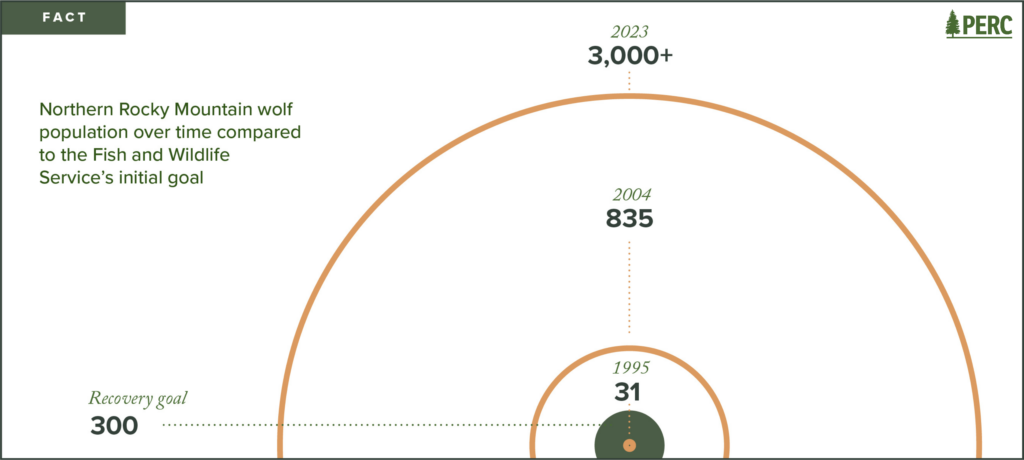
Recovering species requires considerable effort and collaboration between federal and state officials, tribes, private landowners, and conservation organizations. One motivation for these efforts is the promise that, if they succeed, species will be delisted, and controversial federal regulations will fade away. Without an efficient delisting process, however, these efforts are not properly rewarded, and future recovery actions may be discouraged. In the meantime, recovered species loiter on the list, sapping resources that could be used for species that truly need them.
Light at the End of the Tunnel
Under the Endangered Species Act, the Fish and Wildlife Service and National Marine Fisheries Service list a species as endangered or threatened based on five factors: threats to habitat, overutilization, disease and predation, existing regulatory mechanisms, and other natural or manmade factors affecting its existence.3616 U.S.C. § 1533(a)(1). If, based on these same five factors, the species is no longer threatened with extinction and is unlikely to become so in the foreseeable future, it must be delisted as recovered.
The services may delist species on their own or in response to petitions from states, tribes, industry groups, or conservation organizations. Generally, delisting results in full responsibility for managing and conserving the species being returned to states and tribes. Delisting also triggers a monitoring period of at least five years, during which federal officials may quickly relist the species if its population declines or its habitat shrinks under state and tribal management.
Distressingly few species have been delisted due to recovery, with only 72 of the nearly 2,400 listed species achieving this goal.
Fortunately, that has not happened. When species have been delisted and management returned to states and tribes, they have fared well. To date, no recovered species has regressed under state or tribal management and had to be relisted under the act.
As in the case of the wolf, delisting can provoke a lawsuit from anyone who opposes the decision. Federal law encourages such lawsuits, by requiring the government to pay significant attorney’s fees in any case that is at least partly successful. Environmental litigation groups received more than $600,000 in attorneys fees from just two of the lawsuits challenging the Northern Rocky Mountain wolf delisting.37Joint Stipulation, Defenders of Wildlife v. Salazar, 09-cv-77 (D. Mont. 2013); Order, Defenders of Wildlife v. Gould, 08-cv-56 (D. Mont. 2009).
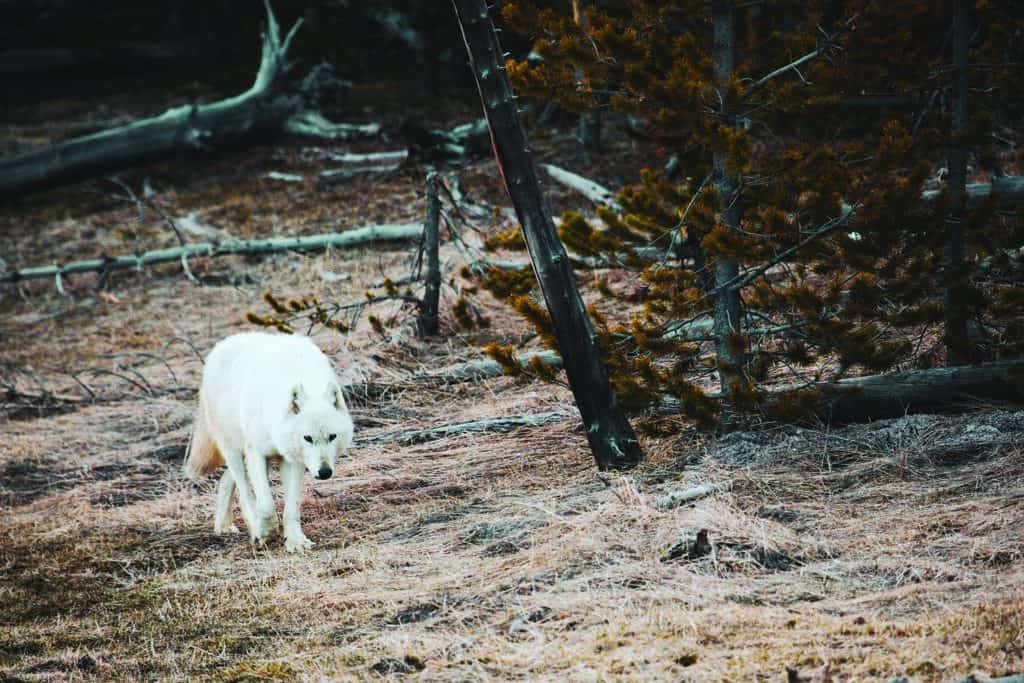
Hotel California
The list of endangered and threatened species is sometimes referred to as “Hotel California,” after the popular Eagles song, because once species get on the list, they seemingly “can never leave.” Distressingly few species have been delisted due to recovery, with only 71 of the nearly 2,400 listed species achieving this goal.38U.S. Fish and Wildlife Service, “Environmental Conservation Online System: Delisted Species,” accessed April 21, 2023, https://ecos.fws.gov/ecp/report/ species-delisted. Only 58 endangered species have improved to the point that their status could be upgraded to threatened.39U.S. Fish and Wildlife Service, “Environmental Conservation Online System: Reclassified Species,” accessed April 21, 2023, https://ecos.fws.gov/ecp/ report/species-reclassified. Excluding foreign and plant species, which are subject to relatively little regulation under the act, these numbers are nearly cut in half.
While the limited progress in recovering species is mostly due to the Endangered Species Act’s weak incentives for proactive recovery efforts, it also reflects an unnecessarily slow and ineffective process for upgrading the status of recovered species. The services sometimes set recovery targets for species only to “move the goalposts” once they are met. At other times, when the agencies determine that a recovery target has been met and that a species’ status should be changed, they simply ignore this scientific finding and wait for states or landowners to petition and file lawsuits to force action. Consequently, it can take years to delist a species even where there is no dispute that it is biologically recovered.
Delays in delisting recovered species reflect a larger process problem. The Endangered Species Act allows anyone to petition the services to list, delist, or change the status of any species and requires the services to give an initial response in 90 days and a final decision within a year. For decades, the services have been bombarded by far more petitions than they could possibly respond to in a timely fashion and are repeatedly sued for missing deadlines. Today, the Fish and Wildlife Service faces a 10-year backlog of petitions to review.40U.S. Fish and Wildlife Service, “National Domestic Listing Workplan: FY23-27 Workplan (April 14, 2023 Version),” (2023).
Delisting species can also provoke litigation. To overturn a delisting in litigation, it is not necessary to show that a species remains endangered or threatened. Instead, it is enough to claim that one of the services should analyze some side issue in greater detail or more thoroughly explain its decision. And some courts have placed a thumb on the scale against delistings by interpreting any uncertainty in the science as reason to keep the species listed. Litigation can also be encouraged by lucrative awards for attorney fees that, especially in the case of serial nonprofit litigants, can far exceed the actual costs to litigate cases.

Exit Here
One critical measure for success under the Endangered Species Act is the recovery and delisting of species. Unfortunately, that has been far too rare in the last half-century. A more prompt and efficient process for delistings would better recognize and reward successful efforts to recover species. It would also give states, tribes, and landowners considering future recovery efforts the confidence that, if they succeed, they too will be rewarded with a delisting.
Recovery Recommendations
Bureaucratic and legal hurdles would be merely frustrating if they did not affect the incentives for states, tribes, and landowners to recover species. But the primary incentive for recovery under the Endangered Species Act is the prospect that success will be rewarded by delisting the species, removing burdensome federal regulations, and returning management to states and tribes. If prompt delistings are not perceived as a realistic outcome, recovery efforts will be discouraged.
1. Codify the listing work plan to give the services breathing room.
In response to a deluge of listing and delisting petitions, the Fish and Wildlife Service developed a work plan to prioritize species based on the urgency of their threats and the quality of information about their statuses. The plan deprioritizes species where the science is still developing or where voluntary, proactive conservation efforts are being implemented. Under current law, however, the work plan cannot set aside the strict deadlines for responding to petitions required by the Endangered Species Act, which fuels excessive and costly litigation. Therefore, Congress should codify the services’ power to develop and implement work plans and retake control of their workload.
2. Propose status changes immediately when recommended in a status review.
When required five-year status reviews reveal that a species’ prospects have improved and its status should be upgraded to threatened or delisted, the services should immediately propose that action rather than waiting for petitions and lawsuits to spur action. Among other things, this will save the agencies later work by allowing them to rely on a fresh review of the science concerning threats to the species.
3. Create a cooling-off period for litigation.
While no recovered species has backslid after it has been delisted, uncertainty about how species will fare under state and tribal management can motivate lawsuits and make courts reluctant to approve delistings. Therefore, Congress should provide that challenges to delisting decisions can only be filed once the post-delisting monitoring period has concluded. That way, litigants and courts can evaluate the decision with the benefit of real-world information on how states and tribes will continue to conserve the species. Should a species backslide during the monitoring period, the Endangered Species Act already allows for an emergency listing.
4. Overturn deslitings only on proof that the species remains endangered or threatened.
Rather than overturning delisting decisions any time a court determines that the services should provide more explanation or analysis for their decision, this remedy should be limited to cases where a litigant has shown that the species is actually still endangered or threatened. This would encourage litigants to focus on the merits of the decision rather than flyspeck agency analysis. And it would even allow additional analysis to take place without the disruptive effect of a species repeatedly bouncing on and off the list.

Grizzly Bear
Ursus arctos horribilis
Est. population in lower 48: 1,500
Listed in: 1975
Adult male range: Up to 600 square miles
4. Chart Roadmaps to Recovery
By Jonathan Wood
On May 5, 1805, William Clark described in his journal an encounter with a “verry large and a turrible looking animal, which we found verry hard to kill.”41Meriwether Lewis, William Clark, et al., “May 5, 1805 Entry,” in The Journals of the Lewis and Clark Expedition, ed. Gary Moulton (Lincoln, NE: University of Nebraska Press / University of Nebraska-Lincoln Libraries-Electronic Text Center, 2005). That animal was a grizzly bear, and the Lewis and Clark expedition journals would help the species capture the American public’s imagination. In the 19th and 20th centuries, however, federal and state bounty programs decimated grizzly populations to reduce conflicts with people and livestock. By 1975, grizzlies were listed as threatened throughout the lower 48.42U.S. Fish and Wildlife Service, “Grizzly Bear,” accessed May 10, 2023, https://www.fws.gov/species/grizzly-bear-ursus-arctos-horribilis.
In 1993, the U.S. Fish and Wildlife Service released a recovery plan to restore grizzlies in six “recovery zones.”43U.S. Fish and Wildlife Service, “Grizzly Bear Recovery Plan,” (1993). Some of these recovery zones have seen incredible progress, while others have languished. In the Greater Yellowstone Ecosystem, grizzlies have far surpassed their 500-bear recovery target, eclipsing 1,000 bears in 2021. There are another 1,114 bears in the Northern Continental Divide Ecosystem surrounding Glacier National Park, exceeding a target of 800 bears. Attempts to delist recovered populations have been blocked by litigation from groups that do not trust states to manage the species.
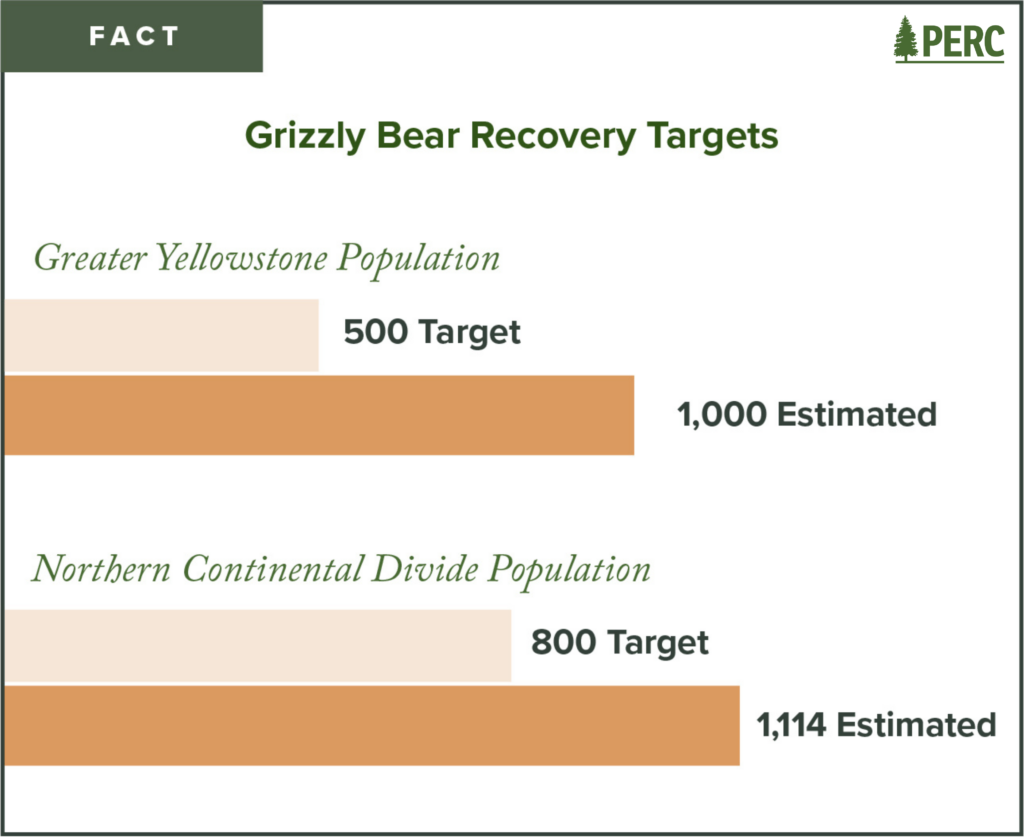
Likewise, proposals to reintroduce and expand bear populations in still-struggling areas have been hampered by conflict and concerns over the regulatory consequences for landowners. Consequently, four of the six recovery areas have at most a few dozen grizzlies.44U.S. Fish and Wildlife Service, “Grizzly Bear Recovery Program: 2021 Annual Report,” (2022). And there is little incentive for states or landowners to do more for these populations because delisting is so difficult and strict federal regulations will continue to apply regardless of any progress.
Species recovery does not have to be this disjointed and conflict ridden. The Endangered Species Act provides an overlooked tool to encourage recovery efforts and lower the stakes of delisting decisions. Under section 4(d) of the act, the Fish and Wildlife Service and National Marine Fisheries Service could craft “roadmaps” for recovering species that incrementally reduce federal regulation as a species hits objective recovery benchmarks. This approach would reward landowners for their contributions and allow states to gradually take over management of threatened species while building trust with conservationists and local communities.
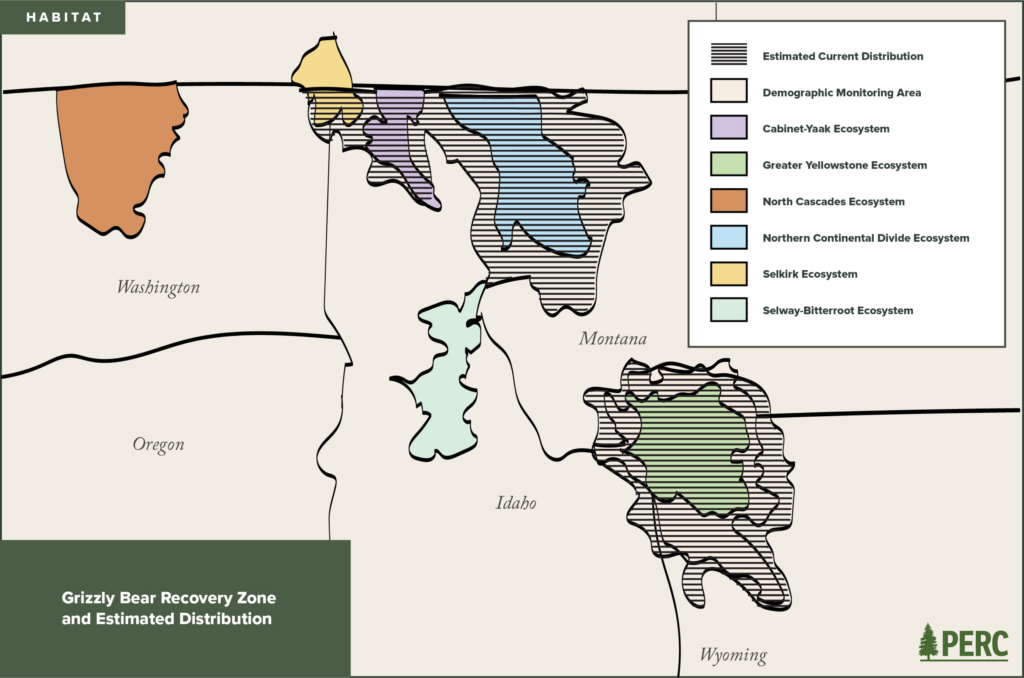
‘Infinite Number of Options’
The Endangered Species Act authorizes the services to issue regulations “necessary and advisable for the conservation” of threatened species such as the grizzly bear.4516 U.S.C. § 1533(d). “Conservation” is defined as the actions “necessary to bring any endangered species or threatened species to the point” that they are no longer threatened, an explicitly recovery-focused standard.4616 U.S.C. § 1532(3). And the “necessary and advisable” phrase requires this recovery to be achieved in a way that is sensitive to the costs imposed on states and private landowners, including how those costs affect incentives to conserve species.47See Michigan v. EPA, 576 U.S. 743, 752 (2015). Congress expected this authority to be used to encourage proactive efforts by states and private parties to help recover threatened species. Because crafting effective rules under this standard would require considerable creativity, Congress wrote section 4(d) to give the services “an almost infinite number of options” for designing these rules.48H.R. Rep. No. 412, 93rd Cong., 1st Sess. 1973.
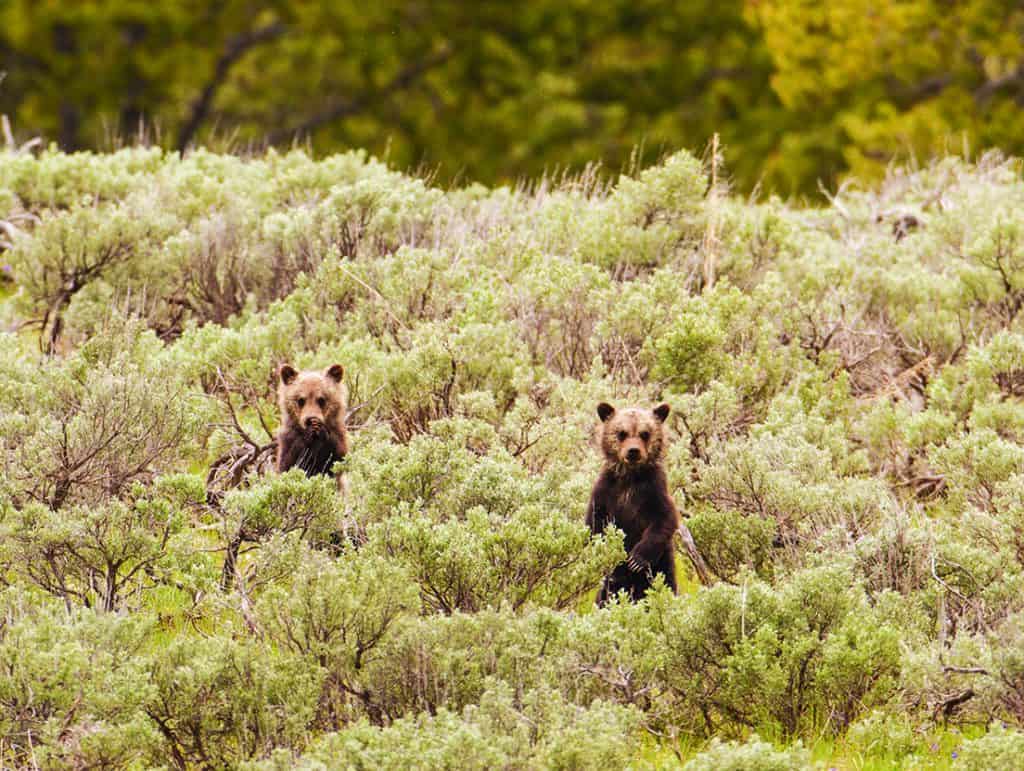
Foregone Flexibility
In practice, however, these rules have been more cookie-cutter than creative. The Fish and Wildlife Service has issued guidance for designing these rules, which emphasizes that the service should start from the assumption that federal regulation will be maximized and then consider exemptions for certain activities.49U.S. Fish and Wildlife Service, “Guidance for Development of Species-Specific 4(d) Rules Under the Endangered Species Act” (2021). A Defenders of Wildlife study has found that these exemptions commonly fall into one of seven categories, including activities that have a trivial impact on the species, are already regulated under other federal or state laws, or are carried out under a federally approved conservation plan.50Ya-Wei Li, “Section 4(d) Rules: The Peril and the Promise,” Defenders of Wildlife ESA Policy White Paper (2017).
A more creative use of regulations to encourage and reward recovery efforts could boost the rate at which we recover endangered and thratened species.
While this formulaic approach to drafting threatened species rules may be easier for the service, it misses opportunities to encourage state and private recovery efforts. Current rules do not, for instance, set objective recovery targets and reduce federal regulation incrementally as those targets are achieved. They also generally do not account for the possibility that different populations of a species will recover at different speeds and require different management strategies over time. Nor do they give states an opportunity to gradually take over management before the species is delisted and, thereby, build trust with conservationists.
Indeed, the Fish and Wildlife Service is resistant to even considering the costs these rules impose on states and private landowners and how those costs affect their incentives to engage in recovery efforts. For the lesser prairie chicken, for example, the service proposed to strictly regulate ranching despite the critical role ranchers play in conserving the bird’s grassland habitat. When conservation organizations such as PERC, National Wildlife Federation, and the Nature Conservancy objected that this would penalize ranchers’ voluntary conservation efforts, the service relaxed its approach.51Property and Environment Research Center, “Comment on Proposed Lesser Prairie Chicken 4(d) Rule,” September 1, 2021; National Wildlife Federation, “Comment on Proposed Lesser Prairie Chicken 4(d) Rule,” August 31, 2021; The Nature Conservancy, “Comment on Proposed Lesser Prairie Chicken 4(d) Rule,” August 2, 2021. Yet, in the final decision approving the revised rule, it still disclaimed any obligation to analyze the rule’s costs or effects on landowners’ incentives.52Endangered and Threatened Wildlife and Plants; Lesser Prairie-Chicken; Threatened Status With Section 4(d) Rule for the Northern Distinct Population Segment and Endangered Status for the Southern Distinct Population Segment, 87 Fed. Reg. 72674, 72717 (November 25, 2022).
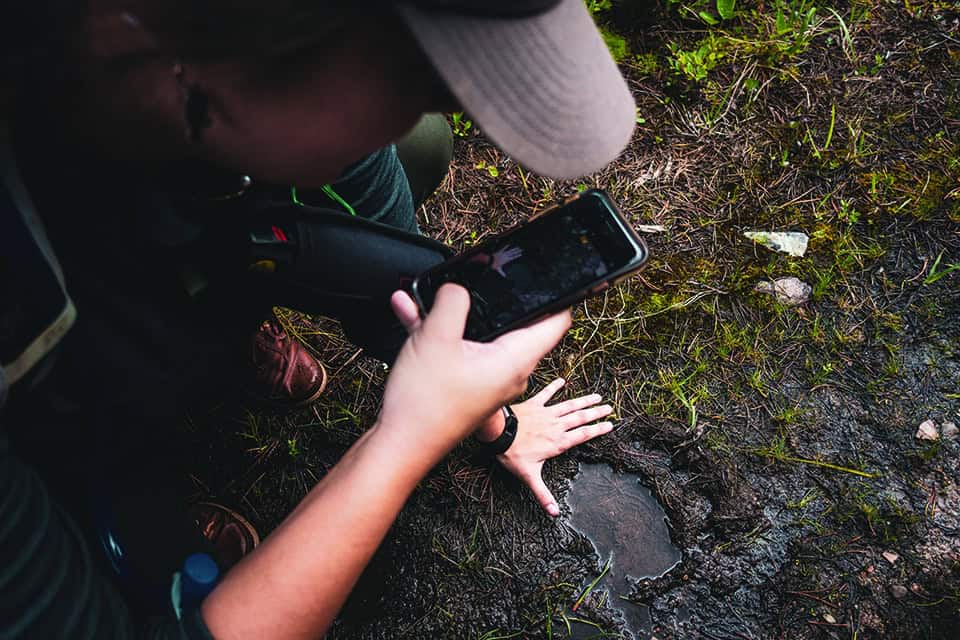
Make Tracks
Threatened species rules are supposed to set species up for recovery. However, the formulaic way they are crafted undermines their potential to encourage proactive recovery efforts, to empower states, and to defuse conflict. If, instead, these rules gave effect to recovery plans, rewarded incremental improvement in a species’ prospects, and allowed states to take over management gradually while building trust with the conservation community, more species could be put on the road to recovery.
Recovery Recommendations
A more creative use of regulations to encourage and reward recovery efforts could boost the rate at which we recover endangered and threatened species. It could also benefit recovery planning, reduce litigation, and give states an opportunity to build trust with conservationists.
1. Set objective recovery benchmarks and reward states and landowners for meeting them.
Rather than issuing rules that regulate a population the same way regardless of whether it is improving, stagnating, or declining, agency rules should identify objective recovery benchmarks and provide for regulation to automatically adjust as they are met. Those benchmarks might be expressed in terms of population numbers, acres of habitat restored, or any other metric that advances a particular species recovery. The key would be to give states and private landowners clear targets and reward them incrementally for their roles in recovering the species. These roadmaps for recovering species would more closely align the incentives of private landowners with the interests of threatened species.
2. Use rules to support and give effect to recovery plans.
To reduce the time needed to craft more creative rules, the services should incorporate their design into the recovery planning process, which currently has no enforcement mechanism. A recovery plan for an endangered species could, for instance, describe the rule the service would adopt if the species’ status improved to threatened and explain how the rule would create the right incentives and advance the recovery plan’s goals. This approach would have the added benefit of encouraging states and landowners to recover species currently listed as endangered, by providing a clear signal of how they might be rewarded when the species is upgraded to threatened.
3. Gradually return full management responsibility to states in anticipation of delisting.
A regulatory roadmap for recovering each threatened species could also reduce conflict over delistings. Currently, delistings result in abrupt changes to management of a species, from nearly complete federal control to nearly complete state control. If states gradually resumed management responsibility, however, they could demonstrate—while the species retained some federal oversight—their ability to manage it effectively and build trust with conservationists. And if there were a period of full state control prior to a species’ delisting, that could substantially reduce incentives to litigate against delistings.
4. Account for the fact that different populations of a species will recover at different rates.
Problems can arise when some populations of a species recover faster than others. The U.S. Fish and Wildlife Service’s approach in these situations has been to propose carving out recovered populations from the larger species designation and delisting them as a recovered distinct population segment. However, that controversial practice has provoked consistent litigation, especially where states have radically different management plans for a population. In fact, the only time this strategy has worked, Congress had to intervene to overturn a court decision.
Another approach would be to write threatened species rules to account for variability among populations and state management plans. For the grizzly, for instance, a rule might terminate federal regulation of the Yellowstone and Northern Continental Divide populations and set incremental recovery benchmarks for other populations that would determine the extent of federal regulation for them over time. Because the entire species would remain listed, federal agencies would still need to consult over their actions. But it would solve most of the problems that states and landowners face when a fully recovered population remains subject to the Endangered Species Act.

Dusky Gopher Frog
Lithobates sevosus
Est. population in lower 48: 100 – 200 frogs
Listed in: 2001
3 inches in length
5. Make Critical Habitat an Asset
By Tate Watkins
The dusky gopher frog is an elusive amphibian that spends most of its life underground and covers its eyes when frightened. Native to the coastal longleaf pine ecosystems that once covered much of the southeastern United States, the frog now teeters on the brink of extinction. As few as 135 remain in the wild today.53U.S. Fish and Wildlife Service, “Dusky Gopher Frog (Rana Sevosa) Recovery Plan,” (2015).
Although the dusky gopher frog is unique, its plight is not. Like many endangered species, the frog lacks enough habitat to sustain viable populations. Recovering the species will require actively creating, restoring, and then maintaining its habitat, much of it on private lands.
Unfortunately, the Endangered Species Act fails to encourage the type of habitat creation and restoration that the frog and many other listed species need. While the U.S. Fish and Wildlife Service designates “critical habitat” for endangered species, these designations often do not motivate conservation. In fact, the approach can create perverse incentives by making endangered species and their habitats liabilities for landowners rather than assets. This can threaten imperiled species by pitting landowners against wildlife instead of providing incentives to conserve and restore habitat.
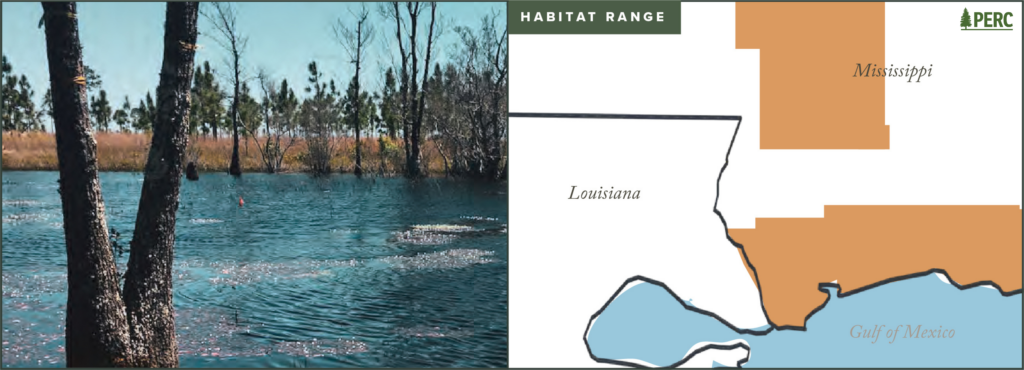
In 2012, the Fish and Wildlife Service designated about 1,500 acres of private timber land in Louisiana as critical habitat for the dusky gopher frog. The agency did so even though the area no longer contained the unique set of features that the frog requires to survive and breed, and despite the fact that the frog had not been documented in the state in more than half a century.54Endangered and Threatened Wildlife and Plants; Designation of Critical Habitat for Dusky Gopher Frog (Previously Mississippi Gopher Frog), 77 Fed. Reg. 35131 (June 12, 2012). The property owners challenged the designation, arguing that it lowered their property’s value and could cost them millions of dollars in foregone development value. The landowners also had no incentive to restore habitat for the frog, which would have been an expensive and laborious undertaking.
In Weyerhaeuser Co. v. U.S. Fish & Wildlife Service, a case that rose all the way to the U.S. Supreme Court in 2018, the landowners ultimately prevailed when the justices ruled that critical habitat must first qualify as “habitat.”55Weyerhaeuser Co. v. U.S. Fish & Wildlife Serv., 139 S. Ct. 361 (2018). But what qualifies as habitat is still unclear, and positive incentives for landowners to recover species remain as elusive as the dusky gopher frog itself. The story of the frog provides several policy lessons and illuminates reforms that could avoid pitfalls of critical habitat designations in the future.
Designating What’s Essential
Habitat loss is the leading cause of species extinction, which means that creating, maintaining, or restoring habitat is crucial to recovering species.56Stuart L. Pimm and Peter Raven, “Extinction by Numbers,” Nature 403 (2000): 843. The Endangered Species Act aims “to provide a means whereby the ecosystems upon which endangered species and threatened species depend may be conserved.”5716 U.S.C. §1531(b). The law’s regulatory mechanism to protect such areas is the designation of “critical habitat,” which includes occupied or unoccupied areas considered to be “essential for the conservation of the species.”5816 U.S.C. §1532(5)(A).
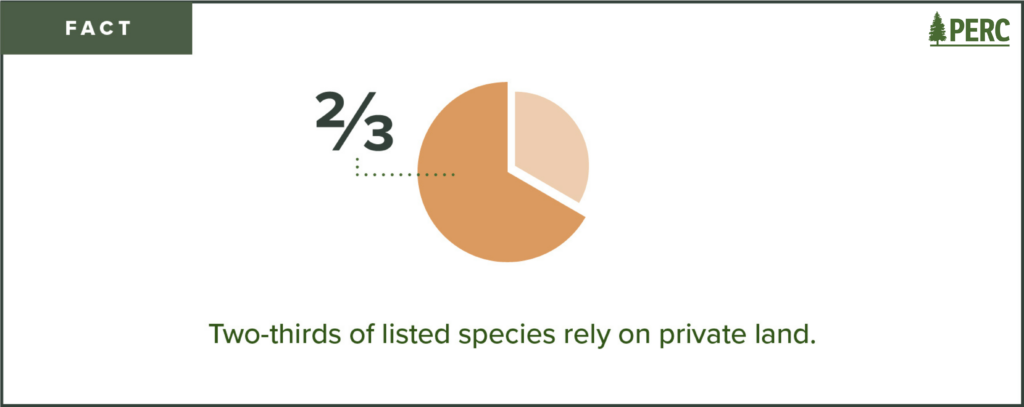
Critical habitat must be determined based on “the best scientific data available” and considering “the economic impact, and any other relevant impact.”5916 U.S.C. §1533(b)(2). If the negative impacts of designating a particular area exceed its benefits, the federal government may decline to designate that area unless doing so “will result in the extinction of the species.”6016 U.S.C. §1533(b)(2).
Two-thirds of listed species rely on some private land for habitat,61U.S. Fish and Wildlife Service, “ESA Basics: 40 Years of Conserving Endangered Species,” (2017). and roughly half of listed species depend on private land for at least 80 percent of their habitat.62Congressional Research Service, “The Endangered Species Act: Overview and Implementation,” (2021): 27. Unsurprisingly, then, the Fish and Wildlife Services often designates critical habitat on private lands. A critical habitat designation on private land, however, does not compel protection or conservation of that land; it merely results in additional regulatory scrutiny if the use of that land coincidentally requires some other, unrelated federal permit.
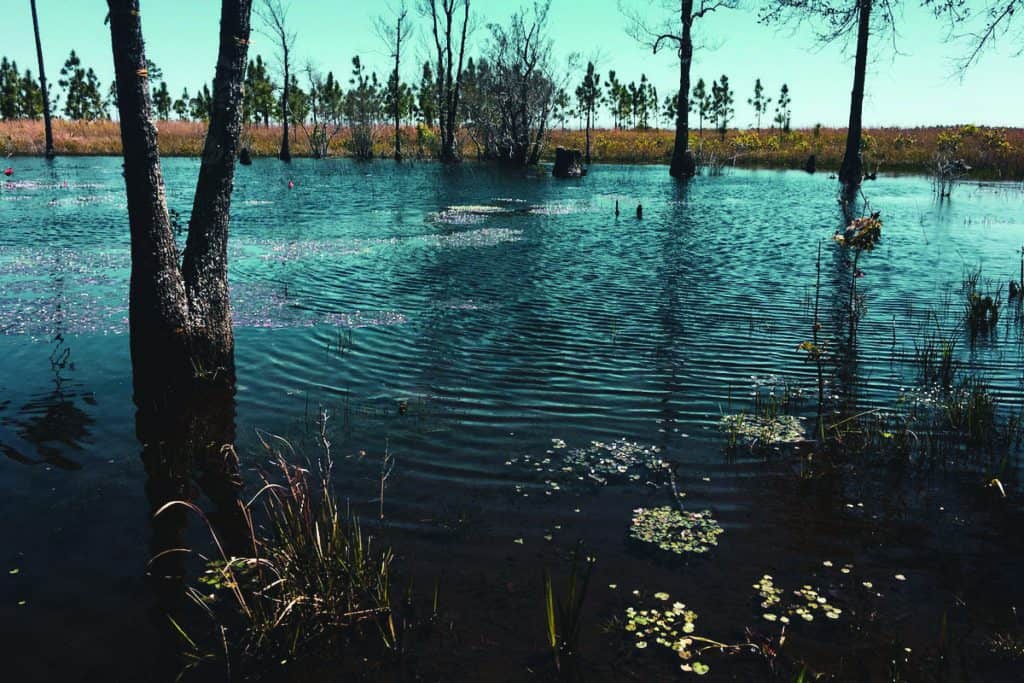
Habitat as a Liability
The dusky gopher frog case demonstrates how critical habitat on private land can be a liability that undermines recovery efforts. The frog depends on active human intervention to sustain its few remaining populations, which are currently found on just six sites in Mississippi. Establishing additional populations requires enormous human effort and expense because most longleaf pine forests have been replaced by commercial timber. Restoring habitat for the frog would mean clearcutting dense stands of commercial pine trees, replanting with longleaf pines, and annually burning the landscape to maintain the fire-adapted longleaf ecosystem.
The Nature Conservancy, one of the world’s best funded and most sophisticated conservation organizations, has demonstrated the arduous and labor-intensive nature of such habitat restoration. It has worked for nearly two decades in southern Mississippi to restore hundreds of acres of a longleaf pine ecosystem, raise and release thousands of tadpoles, and establish a population of approximately 50 adult dusky gopher frogs. The level of effort, expertise, and expense required far exceeds what a typical private landowner might be able or expected to provide.63Tate Watkins, “If a Frog Had Wings, Would It Fly to Louisiana?” PERC Reports 37, no. 1 (2018).
While the U.S. Fish and Wildlife Service designates “critical habitat” for endangerd species, these designations often do not motivate conservation.
In the case of the landowners in Weyerhaeuser, the critical habitat designation was an enormous liability because it reduced the value of the property and threatened to restrict future land uses. The federal government’s own analysis estimated that the designation had the potential to cost the property owners up to $34 million if it were to prevent future development.64U.S. Fish and Wildlife Service, “Draft Economic Analysis of Critical Habitat Designation for the Mississippi Gopher Frog” (2011). The result is that the dusky gopher frog’s critical habitat designation created acrimony and conflict without promoting any efforts to restore habitat for the species.
Beyond failing to spur conservation, designating private land as critical habitat may even create perverse incentives to destroy habitat as property owners seek to avoid future land use restrictions. One study of the critical habitat designation for a pygmy owl in Arizona, for instance, found that parcels proposed for designation were developed faster than equivalent tracts outside of it, seemingly to deter them from being considered habitat.65John A. List, Michael Margolis, and Daniel E. Osgood, “Is the Endangered Species Act Endangering Species?,” NBER Working Paper 12777 (2006). That outcome is understandable in light of other research that finds critical habitat designations significantly reduce land values. For instance, one recent study found that habitat designations in California decreased land values by 48 percent for the red-legged frog and 78 percent for the bay checkerspot butterfly.66Maximillian Aufhammer et al., “The Economic Impact of Critical-Habitat Designation: Evidence from Vacant-Land Transactions,” Land Economics 96, no. 2 (2020): 188-206.
Disincentives to conserve habitat present enormous challenges given how important private land is for endangered species. The plight of the dusky gopher frog and species like it highlights several issues relevant to the future of critical habitat under the Endangered Species Act.
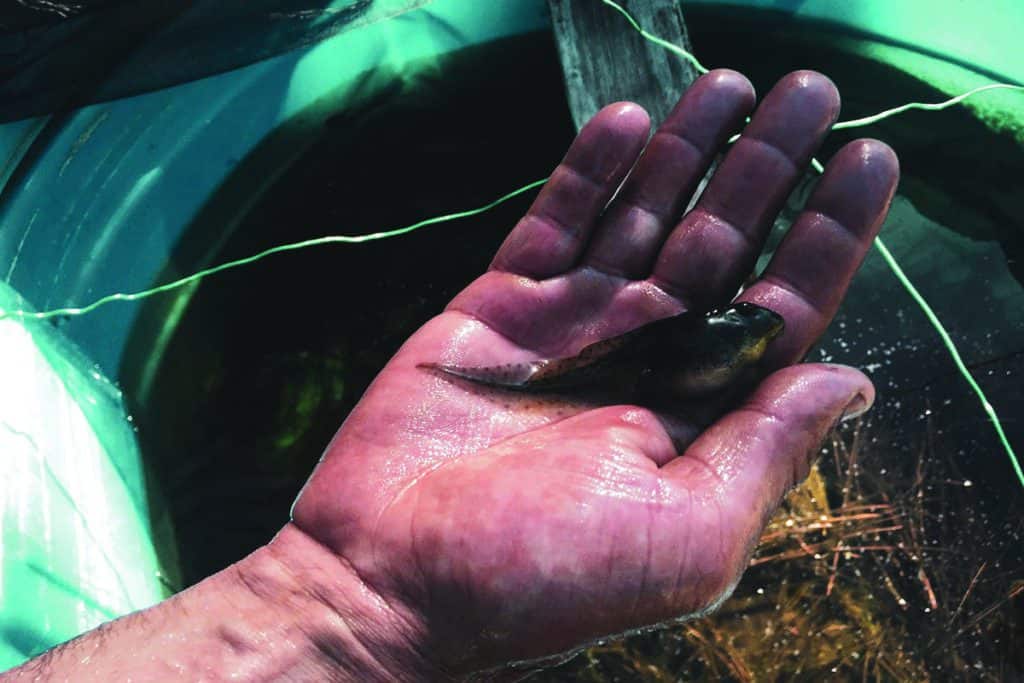
Hop to It
The often-punitive regulatory approach of endangered species policy serves neither property owners nor rare species. In particular, with management-dependent species such as the dusky gopher frog, alternatives that reward landowners are likely to be much more effective than regulations that penalize them. A clearer definition of habitat is likely to reduce conflict with landowners, and market approaches could make habitat an asset rather than a liability, thereby promoting conservation and recovery of imperiled species.
Recovery Recommendations
Instead of penalizing landowners who maintain critical habitat by limiting land uses or reducing property values, encouraging them to participate in conservation and recovery would be better for endangered species. Market approaches that compensate landowners for conserving habitat would align the incentives of imperiled species with the people best positioned to provide habitat.
1. Clarify the meaning of “habitat” and limit designations of critical habitat to areas currently suitable for a species.
The dusky gopher frog conflict highlighted how the Fish and Wildlife Service’s lack of a consistent definition of “habitat” provokes conflict and distracts from species recovery. Congress or the agency should adopt a final definition recognizing that “habitat” is limited to areas that currently have all of the features necessary to support a species. Limiting the definition in this way would focus critical habitat designations on areas where they could do some good while avoiding designations that only create perverse incentives.
2. Account for perverse incentives directly in the critical habitat designation process.
The Fish and Wildlife Service is required to consider economic and other costs resulting from critical habitat designations. In satisfying this obligation, the service should be required to explicitly consider the likelihood that costs will discourage landowners from conserving or restoring habitat. Better accounting for these “conservation costs” can avoid perverse incentives while limiting designations to areas where there are clear and direct benefits to species. In pursuit of minimizing conservation costs of designations, federal land should be prioritized over private lands, where perverse incentives may arise. Occupied habitat should also be prioritized over unoccupied areas, since a species’ presence guarantees at least some protection for habitat features. And unsuitable land should never be designated, because it does not encourage proactive habitat creation and restoration.
3. Purchase land that contains valuable habitat or potential habitat.
Rather than imposing costly and potentially counterproductive critical habitat designations, the government could pay market value for land containing valuable habitat or potential habitat. Congress intended for such purchases to play a significant role in conserving and recovering species, and the Endangered Species Act provides avenues for such transactions. If private land is more valuable as habitat for a species than as working forests, farms, or future developments, then purchases reward landowners for conserving habitat features.
4. Compensate private landowners for restoring habitat or meeting benchmarks for species recovery.
Another market alternative to critical habitat designation would be to compensate private landowners for achieving habitat restoration or species recovery benchmarks. Paying directly for conservation efforts would likely be more cost effective than current procedural spending on critical habitat designations. The approach could also harness private funding or matches from conservation organizations or other parties interested in species conservation. Ideal compensation frameworks would focus on outputs, such as demonstrated contributions to species recovery, while giving landowners flexibility to develop innovative solutions.
5. Incorporate maintenance or restoration of habitat into existing mitigation programs.
Another approach to encourage habitat conservation would be to incorporate it into existing mitigation programs. A federal permit that allows for discharge of pollution to a stream, for instance, may require the permittee to conserve or restore wetlands adjacent to the stream to the extent necessary to remove a similar amount of pollution. Where endangered species habitat contributes valuable ecosystem services, such as filtering air or water, a regime that compensates the private landowner for providing these services will also reward the owner for conserving the habitat.

Utah Prairie Dog
Cynomys parvidens
Est. population: 10,000
Listed in: 1984
Their mating season lasts only an hour.
6. Empower States to Recover Species
By Tate Watkins
Prairie dogs play a vital role in shortgrass prairies and desert grasslands, but their digging also sometimes digs them into trouble. The rodents’ extensive burrows and tunnels can destroy cropland, damage irrigation systems, and mangle pasture. The federal government sponsored 20th-century efforts to eradicate them, which were perhaps a little too successful. The Utah prairie dog, one of five species of the animal, saw its population plummet, and it was listed as threatened in 1973.67Jonathan Wood, “A Prairie Home Invasion,” PERC Reports 36, no. 2 (2017).
The creators of the Endangered Species Act envisioned states playing a crucial role in managing imperiled species like the Utah prairie dog. After all, state agencies manage countless species of wildlife across the country. But rather than playing a cooperative part in managing at-risk species as Congress originally intended, states have largely been sidelined. Instead, federal agencies decide which species to list and how to regulate them, and then often implement those regulations with limited input and participation from states.68Temple Stoellinger et al., “Improving Cooperative State and Federal Species Conservation Efforts,” in The Codex of the Endangered Species Act: Volume II: The Next Fifty Years, eds. Lowell E. Baier, John F. Organ, and Christopher E. Segal (Lanham, MD: Rowman & Littlefield, forthcoming 2023).
Unfortunately for residents in southwestern Utah, nothing about prairie dogs’ destructive habits have changed over the past century. There, federally protected prairie dogs upended home building projects, destroyed private gardens, dug up cemeteries, shuttered public parks and playgrounds, and even tunneled under airport runways.69Wood, A Prairie Home Invasion. Federal endangered species rules, however, forbade state biologists from moving the troublesome prairie dogs to conservation areas with suitable habitat that would actually boost their recovery prospects. That’s because strict federal rules over “take,” or actions that harm members of listed species, can even prohibit activities that aim to conserve a species, such as relocation efforts.
Whether it’s the prairie dog or other imperiled species, federal regulations often mire state-led conservation and recovery efforts. Empowering state and local efforts to manage imperiled species will not only minimize strife between people and protected wildlife, but it will also benefit at-risk species in Utah and beyond.

Federalism on the Brink
Congress intended for the Endangered Species Act to have significant federalism components, whereby states cooperatively help the federal government implement the act. This makes sense because states are closer to and more trusted by the communities where rare species are found and have more flexibility to develop tailored local solutions.
The act specifically directs the U.S. Fish and Wildlife Service to “cooperate” with states “to the maximum extent practicable”7016 U.S.C. § 1535(a). and requires the agency to enter “cooperative agreements” with states that develop programs to conserve endangered and threatened species. Cooperative agreements require states to establish and maintain “an adequate and active program for the conservation of endangered species and threatened species,” and states are granted flexibility to determine program specifics.7116 U.S.C. § 1535(c). The act also envisioned states helping shape and implement regulations under the act, including by retaining significant authority over regulating take.7216 U.S.C. § 1535(g)(2). Specifically, the act intended federal rules regarding take of threatened species to require state approval.7316 U.S.C. § 1533(d).
The federal government, however, has yet to embrace the cooperative federalism approach to endangered species that Congress originally intended. Federal rules routinely preempt state policy and approaches, to the detriment of people and imperiled wildlife alike.74Temple Stoellinger, “Wildlife Issues are Local – So Why Isn’t ESA Implementation?” Ecology Law Quarterly 44, no. 4 (2017).

Sidelining States from Recovery Efforts
Threats to a species often vary across its range, and the impacts of regulations may similarly vary. The best approach to recovering a species, therefore, will depend on local context as well as social acceptance. Yet federal agencies often implement the Endangered Species Act through a top-down approach that sidelines states as well as tribes, local governments, and private citizens. These locals usually have little influence or decision-making power when it comes to endangered species. It is little surprise, then, that many states and local communities resent federal attempts to do endangered species conservation “to” them rather than “with” them.
States can play an important role in recovering species. About a decade ago, a court ruling transferred management authority over Utah prairie dogs from the federal government to the state of Utah. Given the opportunity to lead conservation efforts, state and private partners purchased lands that offered quality habitat for the rodents and relocated thousands of them there. The conservation efforts began to resolve conflicts over the prairie dogs, and the population boomed.75Utah Division of Wildlife Resources, “Protecting Utah Prairie Dog Habitat,” Endangered Species Success Stories, December 7, 2021; Chantz Richens, “Utah Prairie Dogs Prosper Under State Management,” ETV News, April 4, 2017. The success was so undeniable that the environmental organization WildEarth Guardians gave Utah higher marks than the Fish and Wildlife Service for prairie dog conservation.76Jonathan Wood, “Are States Better Than the Feds at Protecting Endangered Species?” Pacific Legal Foundation, February 3, 2016.
Whether it’s the prairie dog or other imperiled species, federal regulations often mire state-led conservation and recovery efforts.
After a few years, however, a federal court stopped the successful program when it restored status quo Endangered Species Act regulations for the threatened species, granting the federal government authority over it once more. As a result, Utah’s work to relocate the prairie dogs and minimize conflict with residents ground to a halt. “Decades of federal regulation have created a lot of conflict but haven’t brought us any closer to a long-term plan to protect the Utah prairie dog,” one local property owner said at the time. “The future of the species is on public conservation lands managed by state biologists, not backyards, playgrounds, and other residential areas.”77Pacific Legal Foundation, “U.S. Supreme Court Asked to Review Feds’ Prairie Dog Regulation,” Press Release, September 26, 2017.
Federalism envisions states as laboratories that can help reveal what works and what doesn’t. If multiple states implement their own recovery plans for a listed species whose range spans an entire region, then differences in outcomes can help discover best practices for recovery. Multiple, decentralized recovery programs can also reveal which approaches garner the most buy-in from local communities. The current federal one-size-fits-all policy misses out on these benefits.
Similarly, when states are empowered to recover species, policies can be tailored to local conditions. Federal policy mandates often ignore specific characteristics that state and local entities can account for.78Some environmental and conservation groups prefer federal mandates because they lack trust in states to manage imperiled species for recovery. For more background on that dynamic, see Chapter 4 on charting roadmaps for recovery. And on a practical level, there is ample evidence that landowners and communities prefer locally led conservation solutions to federal ones.79Robert Bonnie, et al., “Understanding Rural Attitudes Toward the Environment and Conservation in America,” Duke Nicholas Institute for Environmental Policy Solutions (2020): 19; Megan E. Hansen et al., “Cooperative Conservation: Determinants of Landowner Engagement in Conserving Endangered Species,” Center for Growth and Opportunity at Utah State University, Policy Paper No. 2018.003 (2018): 16-17.

Time to Dig In
The legislators who passed the Endangered Species Act always intended for states to play a crucial role in carrying out the provisions of it. The act has significant federalism components, yet federal rules have largely sidelined state influence over endangered species policy and implementation. Empowering states to help shape policy and recover imperiled species will benefit people and wildlife alike.
Recovery Recommendations
Congress intended for states to play a significant role in carrying out the Endangered Species Act, yet the act’s federalism provisions have been virtually nullified in practice. The lack of state influence over policy and management of imperiled species is detrimental to local communities as well as at-risk wildlife. Listed species would benefit from reforms that empower state-led conservation that can better account for local knowledge, attitudes, and settings.
1. Reverse federal rules that nullify the Endangered Species Act’s federalism provisions.
Federal agency rules for many endangered species preempt state approaches to and efforts at conservation and recovery. The Fish and Wildlife Service should reverse rules and guidelines that sideline states from participation in endangered species management and recovery. In addition, Congress could ensure regulations for listed species respect the Endangered Species Act’s federalism components by passing legislation that clarifies states’ full authority and proper role under the act. States already play a significant role in implementing other federal environmental laws such as the Clean Water Act and Clean Air Act. By reasserting and embracing its cooperative federalism provisions, the Endangered Species Act should do the same.
2. Give states the power to implement the act by issuing permits and leading proactive recovery efforts.
Congress or the Fish and Wildlife Service should also clarify that states play a significant role in helping determine how listed species will be regulated and managed, including by permitting take of endangered species. Local communities generally trust state institutions more than the federal government. Having states taking the lead on species reintroductions, negotiating safe harbor agreements, and performing other conservation activities under the act would allow recovery efforts to harness that trust. States issuing take permits for activities unrelated to recovery efforts, such as construction or development, could also support conservation by proactively identifying potential areas of conflict. In the case of the Utah prairie dog, the state leveraged the permit process to find out where the rodents were causing problems and then relocated them to suitable habitat. But once federal regulations were reapplied to the species, Utah’s ability to avoid conflicts in this way disappeared.
3. Empower states to exercise their authority to approve federal regulation of threatened species.
The creators of the Endangered Species Act intended for federal regulations for threatened species to require state approval in states with cooperative agreements. Congress or the Fish and Wildlife Service should clarify that such states retain authority over regulation of threatened species. The act anticipated that this authority would encourage state efforts to recover threatened species by making it contingent upon establishing conservation programs. A greater state role regarding threatened species specifically would not only restore much of the act’s original intent, but it would also allow the Fish and Wildlife Service to focus its resources on the species that are in greatest jeopardy. Furthermore, successful state recoveries could build trust with landowners and environmentalists, potentially moderating what often become intense battles over listing decisions.

Southern Sea Otter
Enhydra lutris
Est. population: 3,000
Listed in: 1977
Otters store their food in baggy pockets of loose skin under each arm.
7. Turn Reintroduced Species Into Assets
By Tate Watkins and Madison Yablonski
Sea otters may be known as “old men of the sea” thanks to their conspicuous whiskers, but overzealous fur hunting nearly cut their time in the water short. By the early 20th century, only 50 otters survived along the California coast. Over the decades their numbers grew to approximately 1,000, but oil spills posed an extinction risk to the population. In 1977, the California sea otter was listed as threatened under the Endangered Species Act.80Determination That the Southern Sea Otter Is A Threatened Species, 42 Fed. Reg 2966 (January 14, 1977); Marine Mammal Commission, “Southern Sea Otter,” accessed April 18, 2023, https://www.mmc.gov/priority-topics/species-of-concern/southern-sea-otter/. The southern sea otter is commonly known as the California sea otter.
Today, the otters number roughly 3,000, partly due to an experimental population released in the Channel Island waters in the late 1980s.81Marine Mammal Commission, Southern Sea Otter. But the reintroduction of these often-mischievous creatures brought its share of controversy. Otters’ diet of shellfish and other marine life overlaps with the catch of commercial fishers, effectively pitting the “old men of the sea” against the seasoned fishermen of the sea. Moreover, introducing a listed species would have risked fines or criminal charges if anyone accidentally harmed an otter—by catching them in a trap, for instance.82Jonathan Wood, “Will Sea Otters Soon Return to San Francisco Bay?” Property and Environment Research Center, December 18, 2019.
Local buy-in is crucial to the recovery prospects of experimental populations.
To protect against the regulatory impacts of reintroduction, the U.S. Fish and Wildlife Service came to an agreement with local stakeholders. It eliminated civil and criminal penalties for incidental harm to sea otters in the experimental population. It also established a plan to contain otters near the reintroduction area, keeping them away from commercial fisheries. Congress approved the plan, allowing fishermen and translocated otters to coexist.83Public Law No. 99-625 (1986).
After several decades of the population improving, however, the Fish and Wildlife Service unilaterally nullified the agreement in 2012.84Endangered and Threatened Wildlife and Plants; Termination of the Southern Sea Otter Translocation Program, 77 Fed. Reg. 75265 (December 19, 2012). Deciding not to honor a compromise that balanced sea otters and fishery resources not only eroded trust with locals, but it also weakened the service’s prospects to reintroduce the species farther north in California or Oregon.85U.S. Fish and Wildlife Service, “Exploring Sea Otter Reintroduction,” accessed April 24, 2023, https://www.fws.gov/project/exploring-sea-otter-reintroduction.
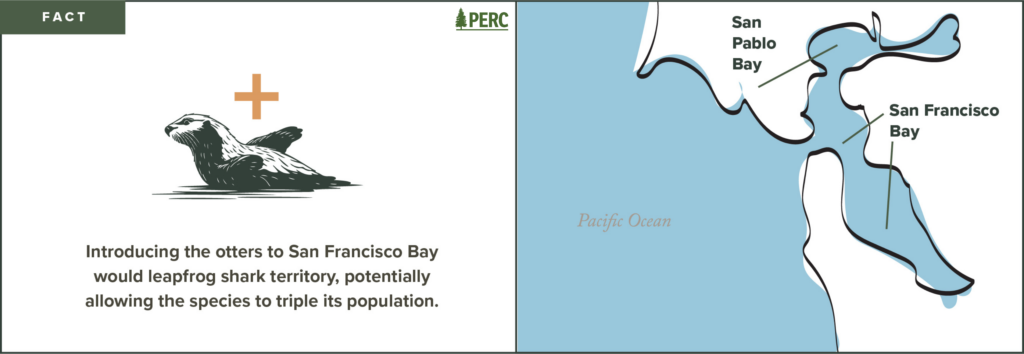
Like the California sea otter, many imperiled species need proactive efforts to recover. Introducing experimental populations can boost recovery prospects, but success will hinge on cooperating with local stakeholders rather than alienating them. Federal agencies should ensure that introductions of experimental populations do not erode trust with nearby communities and risk undermining recovery efforts. Instead, policies must provide opportunities for collaborative approaches to reintroduce and recover at-risk species.
Experiments in Recovery
The Endangered Species Act gives the Fish and Wildlife Service and the National Marine Fisheries Service authority to introduce experimental populations to aid in recovering listed species.8616 U.S.C. § 1539(j). Proactively translocating members of an endangered or threatened species can be a worthwhile way to promote recovery, but the presence of a listed species can bring significant regulatory burdens for local communities.
To reduce conflicts over introductions, Congress limited the regulatory burdens that could accompany experimental populations.8716 U.S.C. §§ 1533(d), 1539(j). It provided that experimental populations will be treated as threatened for purposes of regulating private activity, regardless of the status of the species as a whole.8816 U.S.C. § 1539(j). For more background on distinctions between threatened and endangered statuses, see Chapter 1 on restoring the Endangered Species Act’s two-step process. This should result in experimental populations being managed more flexibly than other members of a listed species. Commonly, the services find that regulating incidental take—activity that unintentionally harms a member of an experimental population—provokes conflict and is unnecessary to conserve such populations.89See, for example, the black-footed ferret and gray wolf. Endangered and Threatened Wildlife and Plants; Revision of a Nonessential Experimental Population of Black-Footed Ferrets (Mustela nigripes) in the Southwest, 86 Fed. Reg. 33613 (June 25, 2021); Endangered and Threatened Wildlife and Plants; Establishment of a Nonessential Experimental Population of the Gray Wolf in Colorado, 88 Fed. Reg. 10258 (February 17, 2023). The act also forbids the designation of critical habitat and limits consultation for nonessential experimental populations.9016 U.S.C. § 1539(j)(2)(C).
The services have used their authority to designate more than 80 experimental populations of more than 50 listed species since 1982. Over the years, experimental populations of black-footed ferrets, oyster mussels, whooping cranes, bull trout, various types of wolves, and dozens of other species have been reintroduced, with differing degrees of success.91Hunter Sapienza and Ya-Wei Li, “Reintroduction: An Assessment of Endangered Species Act Experimental Populations,” Environmental Policy Innovation Center (2021).

Reintroduction Conundrums
Proactively establishing new populations of listed species can be an effective way to recover them. Yet, too often, the regulation of introduced species is heavy-handed and makes them a liability for surrounding communities and nearby landowners. If an experimental population brings onerous regulation, then it is even more likely to impose burdens by restricting private activity. Introductions, therefore, can be divisive and erode trust with stakeholders who might otherwise become partners in conservation.
For the California sea otter, great white sharks are the biggest obstacle to increasing its range.92Monica Vaughan, “Shark Bites Threaten Southern Sea Otter Recovery in California,” The Tribune, December 6, 2018. Introducing the otters to San Francisco Bay would leapfrog shark territory, potentially allowing the species to triple its population.93Brent B. Hughes et al., “Species Recovery and Recolonization of Past Habitats: Lessons for Science and Conservation from Sea Otters in Estuaries,” PeerJ 7 (2019): e8100. A reintroduction to the bay, however, would bring the same regulatory concerns to commercial fishermen and other locals that the translocation of otters to the Channel Islands originally did. Unfortunately, by not honoring the compromise of the previous reintroduction, the Fish and Wildlife Service eroded trust with local stakeholders even as it boosted the otter’s recovery prospects. Regulatory obstacles could, in theory, be overcome by a similar compromise that helps conserve the otter while mitigating the costs imposed on those who work and play in the bay. But why would Northern California fishermen negotiate with the service after seeing how it treated its commitment to their neighbors to the south?
Fears over potential reintroductions are valid because experimental populations can bring significant costs to surrounding communities. Private landowners provide habitat for a majority of endangered and threatened species.94U.S. Fish and Wildlife Service, “Habitat Conservation Plans,” accessed April 21, 2023, https://www.fws.gov/service/habitat-conservation-plans. Without policies that bring landowners in as conservation partners, rather than making them regulatory targets, experimental populations are not likely to promote recovery of listed species. A reintroduction of red wolves to eastern North Carolina in 1986 has largely failed due to conflicts with local communities.95U.S. Fish and Wildlife Service, “Draft Revised Recovery Plan for the Red Wolf (Canis rufus),” Red Wolf Recovery Team (2022). The reintroduction has largely failed despite the Fish and Wildlife Service spending an average of $1.2 million annually on the experimental population for a significant period of the effort. Sapienza and Li, Reintroduction, 17. In a similar vein, community opposition has stymied a Fish and Wildlife Service proposal to reintroduce grizzly bears to the Bitterroot ecosystem in Idaho and Montana for more than two decades.96Sapienza and Li, Reintroduction, 21. Local buy-in is crucial to the recovery prospects of experimental populations.
Furthermore, when reintroduced species disperse, the footprint of their regulatory restrictions can expand along with the population. The Fish and Wildlife Service’s proposal for an experimental population of gray wolves in Colorado, for instance, seemingly ignores how the species has dispersed widely in the past. The proposal indicates that only Colorado agencies and residents will be granted flexibility to manage the experimental population. Once the reintroduced wolves inevitably expand into neighboring states, they will be treated as endangered rather than simply threatened, with significant regulatory consequences.97Property and Environment Research Center, “Comment on the Proposed Establishment of a Nonessential Experimental Population of Gray Wolf in Colorado,” Public Comment to the U.S. Fish and Wildlife Service, April 18, 2023.

Ride with the Current
Proactively introducing imperiled species can improve recovery prospects, but to thrive, experimental populations must have support from local stakeholders. Agencies should reintroduce species only if they can eliminate liabilities to surrounding communities. Finding ways to make reintroduced species assets will go a step further in bolstering conservation. Otherwise, agencies risk eroding trust and undermining recovery, serving neither imperiled species nor local stakeholders.
Recovery Recommendations
First and foremost, federal agencies must ensure that experimental populations will not become liabilities to surrounding communities. Additionally, the Endangered Species Act gives agencies flexibility to make introduced populations assets to landowners who can aid in recovery prospects. They should use their flexibility prudently to encourage collaborative conservation that has local buy-in.
1. Do not limit state flexibility to manage experimental populations.
The Fish and Wildlife Service should not limit flexibility to manage experimental populations reintroduced by states or private partners. Specifically, the service should not regulate take of experimental populations where states or private parties lead the reintroduction. By not regulating take, the service would grant states flexibility to adapt their management strategies as new information and conflicts arise. Such an approach would also avoid imposing unwanted burdens on landowners and other stakeholders—and avoid the conflict and perverse incentives such burdens generate.
2. Do not define experimental populations along political boundaries.
Defining experimental populations along political boundaries, as the service’s proposed rule for gray wolves in Colorado does, is a recipe for conflict.98PERC, Comment on the Proposed Establishment of a Nonessential Experimental Population of Gray Wolf in Colorado. Regulations for experimental populations should instead account for the likelihood of expansion and grant the same flexibility to manage reintroduced member species across their entire range, wherever it ends up spanning.
3. Do not designate critical habitat for experimental populations on private land.
While the law allows critical habitat designations for essential experimental populations, it does not require them, nor does it require that they include non-federal land. As the Fish and Wildlife Service has previously recognized, prioritizing federal land in critical habitat designations respects “the unique obligations that Congress imposed for Federal agencies in conserving endangered and threatened species.”99Policy Regarding Implementation of Section 4(b)(2) of the Endangered Species Act, 81 Fed. Reg. 7231 (February 11, 2016). It also avoids the risk that landowners will preemptively destroy habitat for listed species.100Jonathan Wood and Tate Watkins, “Critical Habitat’s ‘Private Land Problem’: Lessons from the Dusky Gopher Frog,” Environmental Law Reporter 51, no. 7 (2021). For these reasons, the service should not designate critical habitat for experimental populations on private land.
4. Find ways to turn reintroduced species into assets.
Experimental populations can boost the recovery prospects of imperiled species, but they will be most effective where private partners, states, and local entities help make them assets to neighboring communities. Compensating landowners for accommodating species or conserving habitat, for instance, would align private incentives with the interests of species and reduce conflict. The best program for a particular situation will vary according to local preferences, the costs that each species imposes, and the goals of conservation groups; therefore, federal agencies should allow programs to be developed locally and collaboratively rather than imposing a top-down model. They could encourage such collaboration and creativity, however, by conditioning introductions on the development of programs to reward local stakeholders for their role in recovery.

Monarch Butterfly
Danaus plexippus
Est. population: 21 million
Listed in: Now under review
Monarch butterflies are poisonous.
8. Remove Roadblocks
By James Priest
The conspicuous orange-and-black wings of the monarch butterfly and its long-distance annual migration make it one of the most iconic insects in the country. Its range spans every state except Alaska, and countless Americans have memories of using hatching kits to raise and release the butterflies during primary school.101Tate Watkins, “The Once and Future Monarch,” PERC Reports 38, no. 2 (2019).
The ubiquitous and beloved nature of the monarch makes its current plight poignant. Increased use of herbicides in agriculture has taken a toll on milkweed, the sole plant that monarch caterpillars eat. Logging in central Mexico has also destroyed habitat where monarchs spend the winter before migrating back north. These and other threats have caused monarch populations to decline substantially, and in 2020, the U.S. Fish and Wildlife Service officially deemed the butterfly a candidate to be listed under the Endangered Species Act in the future.102Endangered and Threatened Wildlife and Plants; 12-Month Finding for the Monarch Butterfly, 85 Fed. Reg. 81813 (December 17, 2020).
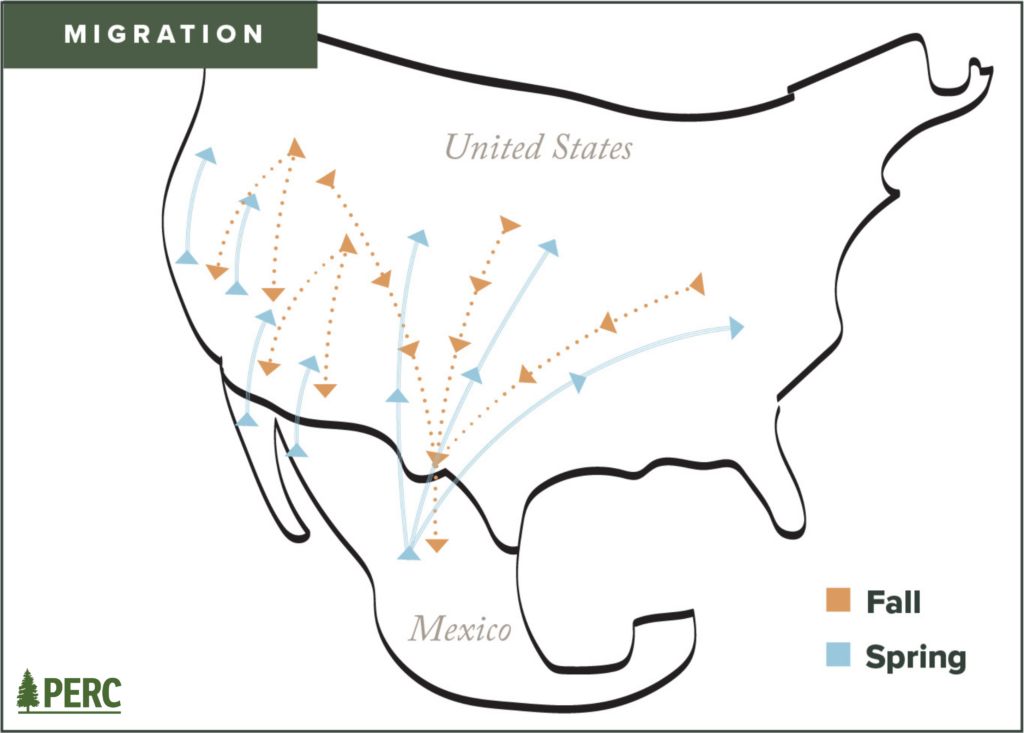
Listing the monarch, however, would likely be counterproductive to conserving it. Endangered Species Act regulations are difficult to enforce against small harms, such as reducing the presence of milkweed in remote fields. And monarch recovery will ultimately require active restoration, including planting milkweed. Indeed, voluntary conservation efforts will be needed across the monarch’s vast migration pathway. But what farmer, gardener, or other landowner would want to attract butterflies that would limit how they can use their land?103Shawn Regan and Tate Watkins, “Regulations Won’t Save America’s Favorite Butterfly,” National Review, December 19, 2020.
Aware of these challenges, federal agencies have created several voluntary programs that shield landowners and others from regulatory disincentives in exchange for helping recover species. But participating in these programs can be costly and time-consuming for landowners and can still leave them or their neighbors open to regulatory risk. Making them simpler and more accessible would encourage more landowners to voluntarily restore habitat and recover species.
Barriers to Recovery
The Endangered Species Act restricts land use where listed species and their habitats are found.10416 U.S.C. § 1533(b). If a private landowner’s activities would “harm” listed species, they must first obtain a federal permit, a costly, bureaucratic, and, at times, lengthy process.10516 U.S.C. § 1539(a). Importantly, these prohibitions and permit requirements also apply to a landowner’s actions intended to benefit species, thereby erecting obstacles to voluntary conservation.
The Endangered Species Act has not fulfilled its promise because the incentives are wrong. Its default regulations make a species or its habitat a significant liability for private landowners. Moreover, the act offers little reward to landowners who proactively restore habitat and recover species. And the focus on requiring federal permits cannot legally or practically compel proactive recovery efforts.106The Fish and Wildlife Service recently acknowledged that it cannot use the permitting process to create or expand habitat for species. Instead, the service noted, the best it can do is “maintain the current status of affected resources (i.e., no net loss [of habitat]).” U.S. Fish and Wildlife Service Mitigation Policy and Endangered Species Act Compensatory Mitigation Policy, 88 Fed. Reg. 31000 (May 15, 2023). Therefore, for the act to fulfill its purpose, incentives must be recalibrated to encourage voluntary recovery of species.

A Lack of Voluntary Participation
Federal agencies have created several voluntary programs that provide regulatory relief for landowners who help recover certain species. Unfortunately, the programs are overly complex and have high transaction costs, factors that discourage participation. Moreover, the programs do not extend regulatory protections beyond participating landowners, potentially exposing neighbors to regulatory costs and breeding ill will.
Two such voluntary programs are candidate conservation agreements with assurances (CCAA) and safe harbor agreements (SHA). CCAAs provide regulatory assurances to private landowners who help conserve a species before it is listed.107U.S. Fish and Wildlife Service, “Candidate Conservation Agreements with Assurances,” accessed April 3, 2023, https://www.fws.gov/service/candidate-conservation-agreements-assurances. In exchange for taking specific voluntary conservation measures, landowners will not face additional regulatory burdens if the species is later listed. Similarly, safe harbor agreements authorize landowners to perform voluntary habitat restoration or other recovery efforts and guarantee that participants will not be punished if their actions expand the population and habitat of listed species on their land. Under an SHA, a landowner is also guaranteed the right to return their property to its baseline condition, as it was before restoration, if conflict arises in the future.
Both programs have demonstrated some success. The monarch itself is the subject of a CCAA that, if the butterfly eventually becomes listed, provides regulatory relief to transportation departments and utility companies that restore flowering habitat beside highways and in other rights-of-way.108Michael Doyle, “Monarch Butterfly Gets Protection in ‘Historic’ Deal,” E&E News, April 8, 2020. CCAAs have also helped increase Arctic grayling numbers by 127 percent in Montana’s rivers since the early 2000s.109Shawn Regan, “Save Endangered Species From Environmental Regulations,” Reason, February 10, 2023. And SHAs have helped reintroduce black-footed ferrets in Colorado and protect coho salmon and speckled pocketbook mussel.110Sand County Foundation, “Colorado 2014: Turkey Creek Ranch,” accessed March 15, 2023, https://sandcountyfoundation.org/our-work/leopold-conservation-award-program/walker-family-turkey-creek-ranch; NOAA Fisheries, “Shasta River Safe Harbor Agreement Delivers Win for Coho Salmon and for Landowners,” March 15, 2021; The Nature Conservancy, “Ozark Rivers Program: Arkansas,” accessed March 15, 2023, https://www.nature.org/en-us/get-involved/how-to-help/places-we-protect/ozark-rivers-program/.
What farmer, gardener, or other landowner would want to attract butterflies that would limit how they can use their land?
Those successes notwithstanding, the programs require significant investments of time and money, burdens that discourage enrollment. Landowners must clear complicated bureaucratic hurdles to enroll, and it can take longer than nine months for an SHA or CCAA to be approved.111The Nature Conservancy, Ozark Rivers Program. Furthermore, the back-and-forth nature of these agreements between landowners and federal agencies increases transaction costs, reducing participation in voluntary conservation.
The Fish and Wildlife Service’s conservation banking program represents another one that has good aims, and has achieved some success, but ultimately misplaces incentives. Conservation banks spur proactive conservation and restoration of habitat for endangered and threatened species by offsetting environmental impacts made by development or similar activity elsewhere. Landowners who participate receive economic compensation to protect or restore natural resources.112Guidance for the Establishment, Use, and Operation of Conservation Banks, 68 Fed. Reg. 24753 (May 8, 2003). In Solano County, California, for instance, a conservation bank was established to successfully reintroduce the California red-legged frog on land that had previously been used as a landfill.113Ben Guillon et al., “Banking on Endangered Species,” PERC Reports 34, no. 2 (2015). Currently, there are roughly 150 conservation banks approved by the Fish and Wildlife Service, protecting habitat for more than 70 listed species.114Amanda Zhang, “Species Habitat and Conservation Banking,” Conservation Finance Network, September 30, 2020.
The service’s approach to conservation banking, however, has several problems. Public lands are not included in the program despite Congress tasking federal agencies with unique obligations to help conserve listed species.115Policy Regarding Implementation of Section 4(b)(2) of the Endangered Species Act, 81 Fed. Reg. 7226 (February 11, 2016). Including public lands would make it easier to harness agencies’ obligations to conservation through banking. Even if conservation banking was extended to public lands, however, federal “use it or lose it” requirements would in many cases undermine the effort. When it comes to public grazing lands, for example, agency rules penalize ranchers who do not make full use of their allotments; therefore, absent policy changes, a rancher engaging in conservation banking could risk penalty.116Property and Environment Research Center, “Comment on the Advanced Notice of Proposed Rulemaking on Compensatory Mitigation Mechanisms, ” Public Comment to the U.S. Fish and Wildlife Service, September 26, 2022; Bryan Leonard and Shawn Regan, “Legal and Institutional Barriers to Establishing Non-Use Rights to Natural Resources,” Natural Resources Journal 59, no. 1 (2019):135-179.

End the Flight Delays
The Fish and Wildlife Service’s desire to foster proactive, voluntary conservation of imperiled species is well-placed, but it has made the process needlessly difficult. To encourage voluntary recovery efforts, it is imperative that the service and Congress harness property rights and market principles to encourage private landowners to become collaborators in conservation.
Recovery Recommendations
Proactive, voluntary conservation of listed species will only reach its maximum potential if several bureaucratic roadblocks are removed. Reforms can align the incentives of federal agencies and private landowners toward recovering and delisting species through voluntary programs.
1. Streamline voluntary conservation programs for landowners.
Candidate conservation agreements with assurances and safe harbor agreements should be simplified into a single program to minimize transaction costs for them.117As of early 2023, the Fish and Wildlife Service had proposed but not yet adopted this reform. Endangered and Threatened Wildlife and Plants; Enhancement of Survival and Incidental Take Permits, 88 Fed. Reg. 8380 (February 9, 2023). Similarly, adopting a transparent, standard process and timeline to review conservation bank proposals would increase efficiency and encourage applications. For all voluntary programs, the Fish and Wildlife Service should explicitly allow participants the option to return their land to its baseline, pre-restoration condition.118Property and Environment Research Center, “Comment on the Proposed Enhancement of Endangered Species Act Survival and Incidental Take Permits,” Public Comment to the U.S. Fish and Wildlife Service, April 10, 2023. This would secure participants’ property rights while still providing strong incentives to recover species.
2. Automatically shield neighboring landowners from regulatory consequences.
Landowners will be wary of participating in voluntary conservation programs if their actions would create regulatory headaches for their neighbors. To prevent that, the Fish and Wildlife Service should protect neighboring landowners from regulatory burdens if conservation efforts increase the presence of candidate or listed species on nearby lands. That policy has worked in Colorado with the black-footed ferret and elsewhere with other species.119Hannah Downey, “The Role of Working Lands in Providing Public Conservation Benefits: Policy Challenges to Conservation.” Property and Environment Research Center (2017): 6-9; Endangered and Threatened Wildlife and Plants; Revision of a Nonessential Experimental Population of Black-Footed Ferrets (Mustela nigripes) in the Southwest, 86 Fed. Reg. 33613 (June 25, 2021); Environmental Dfenst, “Safe Harbor: Helping Landowners Help Endangered Species” (1999): 14. Applying the policy at a broader scale would ensure that neighbors’ concerns do not prevent landowners from participating in voluntary conservation efforts.
3. Allow conservation banking on public lands.
Federal lands are subject to congressionally mandated conservation policies. Opening public lands to voluntary programs such as conservation banking would help fulfill those mandates. Still, longstanding “use it or lose it” rules discourage these efforts. Congress should reform these narrowly defined use requirements to recognize conservation as a valid use of public lands.120Bryan Leonard et al., “Allow ‘Nonuse Rights’ to Conserve Natural Resources,” Science 373, no. 6558 (2021):958-961; Shawn Regan, Temple Stoellinger, and Jonathan Wood, “Opening the Range: Reforms to Allow Markets for Voluntary Conservation on Federal Grazing Lands,” Utah Law Review 2023, no. 1 (2023):197-248. It should also ensure that federal policies will not jeopardize allotments of ranchers and other permit holders who opt to engage in conservation banking.

Northern Spotted Owl
Strix occidentalis caurina
Est. population: 3,000 – 5,200
Listed in: 1990
One of the few owls with dark-colored eyes.
9. Reward Agencies for Recovery
By Hannah Downey
Few species are as politically controversial as the northern spotted owl of the Pacific Northwest. The owl’s listing under the Endangered Species Act in 1990 triggered a series of policies that have stoked persistent conflict in the region. In an effort to protect the old-growth trees that the owl relies on, the Northwest Forest Plan reduced logging on federal forests by more than 80 percent. This reduction caused job losses and other economic consequences that have pitted loggers and rural communities against environmentalists ever since.121Ann E. Ferris and Eyal G. Frank, “Labor Market Impacts of Land Protection: The Northern Spotted Owl,” Journal of Environmental Economics and Management, 109:102480 (2021).
Today, as the owl’s population continues to decline, it’s become clear that halting logging is not enough to recover the species. The forests that sustain the owl now face the growing threat of severe wildfires that destroy the owl’s habitat.122Endangered and Threatened Wildlife and Plants; 12-Month Finding for the Northern Spotted Owl, 85 Fed. Reg. 81144, 81152 (December 15, 2020). Actively managing and restoring forest landscapes can reduce these fire risks, but policies intended to protect the owl often create obstacles. In particular, endangered species regulations can discourage or delay much-needed restoration projects on federal land.
Forest restoration projects are a frequent target of Endangered Species Act litigation, especially claims that the consultation for a project did not analyze some speculative impact or relied on rosy assumptions about the project’s effects on species and their habitats.
A forest restoration project in Northern California , for instance, would have reduced fire risks on nearly 10,000 acres of northern spotted owl habitat.123U.S. Forest Service, “Pumice Project Draft Decision Notice and Finding of No Significant Impact,” June 2021. But because the project would temporarily disturb owl habitat, it was delayed for a decade by red tape and litigation under the Endangered Species Act. That delay lasted so long that in 2021 the Antelope Fire “burned through the site before a single chainsaw touched a tree, destroying the owl habitat that the environmental groups were trying to save,” according to TheSacramento Bee.124Ryan Sabalow and Dale Kasler, “‘Self-serving Garbage.’ Wildfire Experts Escalate Fight over Saving California Forests,” The Sacramento Bee, October 17, 2021.
Fortunately, there is growing recognition of the need to actively restore forests and reduce fire risk with targeted thinning and prescribed burning. But too often endangered species regulations get in the way of such projects. Instead of serving only as a tool to stop actions on federal lands that could harm species, the Endangered Species Act should also encourage land managers to proactively recover species through restoration projects and other habitat enhancement efforts.
No Jeopardy
The Endangered Species Act charges every federal agency to work toward species recovery. The principal mechanism for this is a requirement that any agency must consult with the U.S. Fish and Wildlife Service or National Marine Fisheries Service whenever actions it authorizes, funds, or carries out may adversely affect a listed species or its designated critical habitat. If the services anticipate that the action will “jeopardize the continued existence” of the species or “adversely modify critical habitat,” they may suggest changes to the action to avoid these impacts, although these recommendations are not binding.12516 U.S.C. § 1536.
Although these “consultations” almost never conclude that an agency’s action will jeopardize a species’ survival or adversely modify critical habitat, they take substantial time and resources to complete, routinely blowing through the statute’s 90-day deadline. The services have also interpreted consultation as a continuing obligation, rather than a one-off requirement. Thus, federal agencies may have to repeatedly go back and redo the process anytime a new species is listed, critical habitat is designated, or other “new information” comes to light in the years between an environmental review and completion of a project. And any outside group can sue to block agency projects while these consultations proceed.
In addition, the consultation requirement lacks a mechanism to retroactively assess the accuracy of the predictions and speculations about how federal actions might impact listed species. Instead, the process asks agencies to predict potential impacts of future actions and allows opponents to speculatively criticize the analysis, but it provides no means of later evaluating what the actual on the ground impacts were.

Mired in Paperwork
The Endangered Species Act’s consultation process is geared to slow or stop potentially harmful federal activities. It therefore ignores the consequences for species of agency inaction. It can also pose problems for programs and projects that may produce some minor and short-term negative effects but intend to produce large and long-term benefits to species. And it fails to encourage agencies to prioritize projects that benefit species recovery.
Consider the U.S. Forest Service’s management of the national forest system. The 193 million acres provide habitat for more than 430 listed species, including the northern spotted owl.126U.S. Forest Service, “Final Programmatic Environmental Impact Statement: National Forest System Land Management Planning,” (2012): 81. Today, these forests are threatened by a wildfire crisis that annually burns millions of acres of habitat.127See Holly Fretwell and Jonathan Wood, “Fix America’s Forests: Reforms to Restore National Forests and Tackle the Wildfire Crisis,” PERC Public Lands Report (2021). Tackling this crisis will require a substantial increase in forest restoration projects, including mechanical thinning and prescribed burning.
Forest restoration projects are a frequent target of Endangered Species Act litigation, especially claims that the consultation for a project did not analyze some speculative impact or relied on rosy assumptions about the project’s effects on species and their habitats. This has significantly hampered the Forest Service’s ability to restore forests and address wildfire risks. In a fateful decision known as Cottonwood, the Ninth Circuit Court of Appeals held in 2015 that the services’ policy requiring additional consultations whenever there’s a new listing, critical habitat designation, or new information applies to completed forest plans—even though agencies already re-consult for every individual project implemented under these plans.128Cottonwood Environmental Law Center v. U.S. Forest Service, 789 F.3d 1075 (9th Cir. 2015).
When the Cottonwood decision was announced, the Obama administration warned it could “cripple” the Forest Service’s ability to restore forests and distract the Fish and Wildlife Service from recovering species.129See Pet. for Cert., U.S. Forest Service v. Cottonwood, No. 15-1387 (filed June 10, 2016). Today, the Forest Service says that 87 of the 154 national forests are vulnerable to a Cottonwood lawsuit, and completing the redundant consultations will take up to 10 years and cost tens of millions of dollars.130U.S. Forest Service, “Deputy Chief French Testimony on Lands Bills,” March 24, 2023. In the meantime, tens of millions of acres of wildlife habitat remain at extreme risk of wildfires.
Letting habitat go up in smoke while an agency is bogged down in paperwork is no way to recover species. Instead, public land managers should be encouraged to prioritize on-the-ground work that promotes species recovery and habitat restoration.

Give a Hoot
Recovering endangered and threatened species will require proactive habitat restoration on public lands. Current burdensome consultation requirements consume time and resources that could be better spent on the ground to manage and restore habitat. Streamlining and simplifying the consultation process will better align public land managers’ priorities with species recovery.
Recovery Recommendations
For many species, recovery will depend on federal agencies taking proactive steps to restore habitat, especially agencies that manage vast areas of public land. It is essential that endangered species policy encourages such efforts and avoids miring them in red tape. Indeed, agencies should be rewarded for building species conservation into their missions and adopting a “can do” approach to recovery.
1. Limit reconsultations to projects with on-the-ground impacts to protected species.
Requiring federal land managers to restart consultations at both the forest plan and individual project level is unnecessarily duplicative and expends resources that would be better spent implementing projects on the ground. Congress and the Fish and Wildlife Service should exempt forest plans and similar plans that do not have on-the-ground impacts, and consequently cannot directly harm endangered species, from reconsultation requirements.131See Jonathan Wood, “Testimony on H.R. 200, H.R. 1473, H.R. 1567, and H.R. 1586,” U.S. House Natural Resources Committee, Subcommittee on Federal Lands, March 23, 2023. See also Fretwell and Wood, “Fix America’s Forests” (2021). This will allow agencies to focus on proactively restoring ecosystems that benefit species in the long run and protect them from wildfire, without sacrificing protections for species.
2. Reward agencies that proactively plan to recover listed species.
Agencies should be encouraged to develop plans to proactively recover species and be rewarded for it with reductions in red tape. Congress should authorize agencies to develop resource management plans that produce a net conservation benefit for species. These conservation benefit plans would outline how agency actions would aid the long-term success and recovery of listed species and could be modified to incorporate new information and offset future actions. Agencies that develop these plans would be exempt from consulting over individual projects that implement them.132See Timothy Male, “Making an Asset of Endangered Species Recovery,” in The Codex of the Endangered Species Act: Volume II: The Next Fifty Years, eds. Lowell E. Baier, John F. Organ, and Christopher E. Segal (Lanham, MD: Rowman & Littlefield, forthcoming 2023). By proactively incorporating species recovery goals into agency actions and reducing paperwork burdens, federal agencies could make stronger recovery commitments and directly contribute to recovery progress.
3. Reward effective agencies by letting them shift to retrospective analysis.
Analyzing only the predicted effects of potential projects invites opponents to imagine worst-case scenarios and file speculative lawsuits against projects. Retrospective reviews of current and past projects, on the other hand, could generate reliable information about what activities help and harm species—and how much. To encourage retrospective reviews of projects affecting recoveries of listed species, Congress should allow agencies that perform them and demonstrate a consistent ability to deliver benefits for species to obtain an exemption from consultation and the speculative litigation it encourages.

Jaguar
Panthera onca
Est. population: Few, if any
Listed in: 1972
The jaguar is 8 feet in length.
10. Embrace Incentives Over Penalties
By Shawn Regan
Often associated with the jungles of the tropics, jaguars once roamed the southwestern United States from California to Louisiana. But over the past century, habitat loss and government-run predator extermination campaigns have largely confined North America’s population of jaguars to Mexico. As recently as 1963, the elusive cats were spotted as far north as the Grand Canyon.133Sandra Blakeslee, “Gone for Decades, Jaguars Steal Back to the Southwest,” The New York Times, October 10, 2006. Today, however, there are only sporadic sightings this side of the border.
In 1997, the federal government listed jaguars as endangered in the United States and later designated tens of thousands of acres of critical habitat in Arizona.134Endangered and Threatened Wildlife and Plants; Designation of Critical Habitat for Jaguar, 79 Fed. Reg. 12571 (March 5, 2014). Yet recovery progress has been slow or nonexistent. For ranchers in Arizona who could provide large areas of potential habitat, jaguars represent a threat. The endangered felines not only prey on livestock, but they also come along with burdensome regulations and land-use restrictions, making them liabilities instead of assets. This discourages landowners from participating in jaguar recovery efforts.
Contrast that with the perspective of Diego Ezrré, a rancher in Northern Mexico. When jaguars are spotted on his land, he celebrates. “Our perspective has changed,” Ezrré told a local radio station in 2019. “We realize that the jaguars aren’t such a threat.”135Kendal Blust, “Cameras and Coexistence: Learning to Live with Jaguars,” KJZZ, June 20, 2019. That’s because the nonprofit Northern Jaguar Project rewards Mexican ranchers like Ezrré for contributing to jaguar recovery.136Northern Jaguar Project, “Viviendo con Felinos,” accessed April 24, 2023, https://www.northernjaguarproject.org/viviendo-con-felinos/. The organization has implemented a program that pays landowners for every photo of a jaguar captured on remote trail cameras, turning the species from liabilities into assets.
There is a growing recognition of the importance of embracing positive incentives to motivate conservation efforts.
North of the border, ranchers receive no such reward for the presence of jaguars or other imperiled species. By imposing regulations and other restrictions, the Endangered Species Act essentially penalizes landowners who provide habitat, creating perverse incentives that undermine species recovery. One recent survey found that these regulations are even more concerning to Arizona ranchers than the actual presence of jaguars—meaning they are less willing to contribute to recovery efforts than they would otherwise be.137Colleen M. Svancara et al., “Jaguar Critical Habitat Designation Causes Concern for Southwestern Ranchers,” Rangelands 37, no. 4 (2015): 144-51.
As the plight of the jaguar makes clear, species recovery ultimately depends on getting the incentives right. That means finding ways to turn endangered species into assets instead of liabilities for the people who are most critical to recovery efforts.
Paying to Protect
Outside the Endangered Species Act context, there is growing recognition of the importance of embracing positive incentives to motivate conservation efforts. Nonprofit conservation groups have developed highly effective, incentive-based projects that reward landowners for hosting wildlife on their land.138See, for example, Laura Huggins and Olivia Hansen, “Cameras for Conservation: Direct Compensation as Motivation for Living with Wildlife,” The Center for Growth and Opportunity, Policy Paper (2021). Payments for ecosystem services—in which landowners are paid for implementing practices that provide ecological benefits—are also gaining popularity.139James Salzman, “Designing Payments for Ecosystem Services,” PERC Policy Series 48 (2010). And a variety of state and federal conservation programs provide payments or other incentives for landowners to adopt conservation practices, improve soil and water quality, or enhance wildlife habitat.140See Luke Macaulay, “How States Shape Wildlife Conservation on Private Lands: A 50-State Analysis,” Property and Environment Research Center (2023). See also U.S. Department of Agriculture, “Conservation Reserve Program,” accessed April 24, 2023, https://www.fsa.usda.gov/programs-and-services/conservation-programs/conservation-reserve-program/.
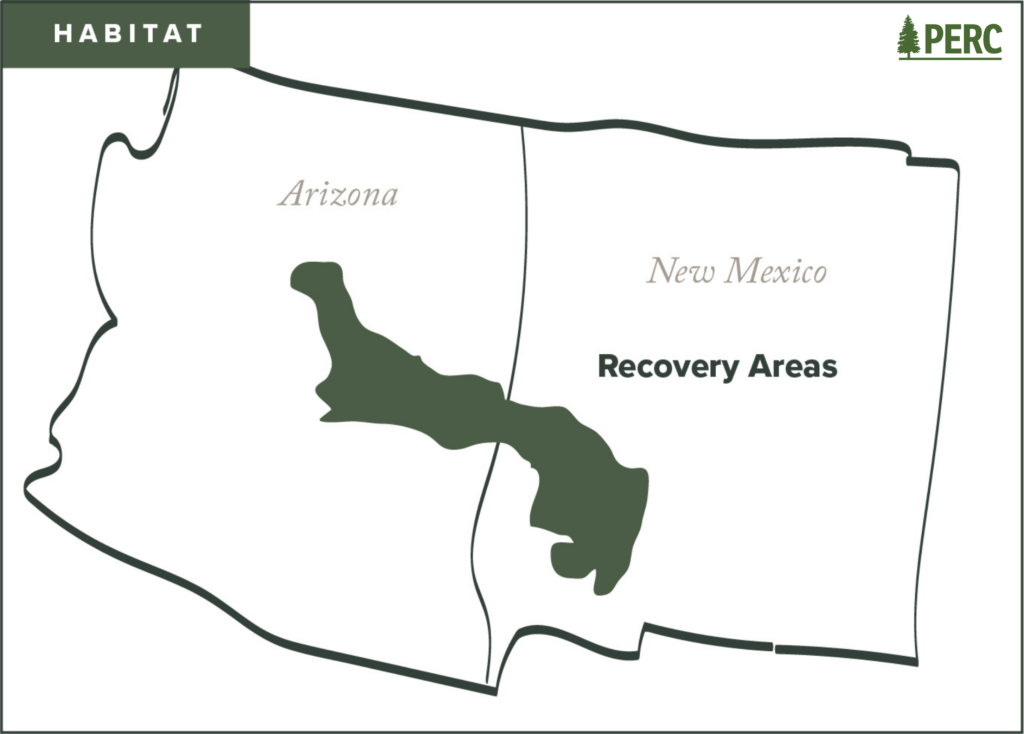
These incentive-based approaches take a variety of forms tailored to each unique conservation challenge. The Nature Conservancy pays farmers in California’s Central Valley to flood their fields certain times of the year to serve as habitat for migrating waterfowl. Ducks Unlimited provides financial incentives for landowners in the northern Great Plains to preserve “prairie potholes” as crucial duck habitat.141Henry Holmes, “Protecting America’s Duck Factory,” PERC Reports 38, no. 2 (2019). The Audubon Society pays farmers to modify mowing schedules to protect nesting grassland birds.142Lisa W. Foderaro, “How Farmers in New England Make Hay for Bobolinks,” Audubon Magazine (Summer 2021). And Wild Sky, a project run by the nonprofit American Prairie, makes direct payments to Montana ranchers who implement certain wildlife-friendly practices that benefit elk, mountain lions, bears, and other species.143Laura Huggins, “Contracting for Conservation,” PERC Reports 36, no. 1 (2017).
By making conservation an asset—or, at the very least, helping offset its costs—these efforts can encourage landowners to become partners in wildlife recovery. Most of these programs, however, are focused on non-listed species due to the significant regulatory burdens that come along with species protected under the Endangered Species Act.

‘The Incentives Are Wrong’
Despite its success in other contexts, the Endangered Species Act has yet to embrace similar incentive-based strategies. The act grants broad regulatory authority to restrict land uses, but it does little to encourage landowners to recover endangered species. In fact, the law often does the opposite: By restricting the use of land where rare species and their habitats are found, the law essentially punishes landowners for conserving species. In some cases, this has caused landowners to preemptively destroy habitat to avoid endangered species regulations, ultimately undermining the law’s effectiveness.144Dean Lueck and Jeffrey Michael, “Preemptive Habitat Destruction Under the Endangered Species Act,” Journal of Law & Economics 46, no. 27 (2003); John A. List, Michael Margolis, and Daniel E. Osgood, “Is the Endangered Species Act Endangering Species?” NBER Working Paper 12777 (2006); Daowei Zhang, “Endangered Species and Timber Harvesting: The Case of Red-Cockaded Woodpeckers,” Economic Inquiry 32, no. 150 (2004).
These perverse incentives were aptly described by Sam Hamilton, a former director of the U.S. Fish and Wildlife Service. “The incentives are wrong here,” he once said. “If I have a rare metal on my property, its value goes up. But if a rare bird occupied the land, its value disappears.”145Besty Carpenter, “The Best Laid Plans,” U.S. News & World Report 115, no. 13 (1993). Hamilton’s statement underscores a core issue: The Endangered Species Act’s provisions are exclusively punitive; they do not encourage or reward habitat restoration or other recovery efforts. Instead, the law’s regulatory provisions make species and their habitats a liability that landowners want to avoid, rather than an asset to conserve and enhance.
The Endangered Species Act’s primary regulatory provisions—its strict prohibition on actions that may harm species and its requirement to designate critical habitat—do little or nothing to encourage proactive recovery efforts and may even discourage the types of incentive-based partnerships between landowners and conservationists that have succeeded elsewhere. Broadly defined and strictly enforced “take” regulations make it difficult for landowners to engage in recovery efforts without incurring significant regulatory liabilities, which makes it costly for conservation groups to provide worthwhile incentives. Likewise, critical habitat designations alienate landowners and make them less willing to work with conservationists or federal agencies to proactively recover species.146For background, see Chapter 5 on making critical habitat an asset instead of a liability.
These regulatory provisions also discourage information sharing about endangered species and their habitats. Whereas the incentive-based programs developed by the Northern Jaguar Project and Wild Sky encourage landowners to share information about the wildlife on their properties, the Endangered Species Act makes landowners averse to divulging such information out of fear of the act’s penalties.147Amara Brook et al., “Landowners’ Responses to an Endangered Species Act Listing and Implications for Encouraging Conservation,” Conservation Biology 17, no. 6 (2003): 1638-49; Stephen Polasky and Holly Doremus, “When the Truth Hurts: Endangered Species Policy on Private Land with Imperfect Information,” Journal of Environmental Economics and Management 35, no. 1 (1998): 22-47. Public knowledge about endangered species inhabiting a landowner’s property could bring along additional regulatory scrutiny and burdensome land designations.

Spot the Incentive
The Endangered Species Act has an incentive problem: Landowners who conserve habitat and help recover species are often punished, not rewarded, for their efforts. Because most endangered species rely on private lands for habitat, this punitive approach alienates the very people who are most critical to species recovery. By reforming the act to embrace positive incentives instead of penalties, endangered species can become assets instead of liabilities, empowering landowners to become active participants in habitat restoration and species conservation.
Recovery Recommendations
To fulfill the Endangered Species Act’s goal of recovering species, endangered species must be transformed from liabilities into assets for private landowners who provide habitat. This requires removing the act’s disincentives and adding positive incentives for landowners to engage in recovery efforts. Several reforms could accomplish this.
1. Remove penalties that discourage landowners from protecting endangered species and their habitat.
The Endangered Species Act’s penalty-based approach stems from the law’s strict “take” prohibitions and critical habitat requirements, which can affect even the most routine land uses. A variety of reforms to these provisions could enhance landowners’ willingness to engage in species recovery efforts, as described in other sections in this volume.148For an analysis of how restoring the act’s two-step listing approach would enhance incentives for recovery, see Chapter 1. See also Chapter 5 for a discussion of removing the disincentives for recovery that occur when critical habitat is designated on private lands. Additionally, Chapter 7 explores ways to ensure reintroduced species do not become liabilities for surrounding communities. By removing—or at least reducing—the act’s perverse incentives, private organizations would have more ability to partner with landowners, whose interests in recovering species are often blunted by regulatory disincentives. The result will likely be more private-led efforts to actively recover imperiled species and their habitats, similar to the ones developed by groups such as the Northern Jaguar Project, The Nature Conservancy, and Ducks Unlimited.
2. Empower and support voluntary initiatives that financially reward landowners for recovering species.
In place of punitive regulations that turn imperiled species into liabilities, Congress and the Fish and Wildlife Service should embrace positive incentives that transform species into assets that landowners are rewarded for protecting. This could take a variety of forms: By reducing punitive regulations, policymakers could encourage conservation organizations and others interested in species recovery to develop voluntary, incentive-based efforts to recover listed species, as described above. Agencies could also provide cost-share support for private-led recovery projects, similar to existing federal conservation programs.
Where such private-led efforts do not emerge, the Fish and Wildlife Service could provide direct payments to landowners who recover endangered species and restore their habitat. One way to do this is through conservation rental contracts between landowners and the federal government. Under such a contract, landowners would agree to recover endangered species on their property in exchange for payments based on the number of species conserved or completed restoration activities. Lease periods could be up to 10 years (similar to the existing federal Conservation Reserve Program), and each contract would be tailored to the needs of the species and the landowner.
3. Authorize long-term, outcome-based contracting for endangered species recovery.
The Fish and Wildlife Service and National Marine Fisheries Service currently lack explicit authority to use long-term, outcome-based contracting to motivate species recovery. Such “pay for success” contracts have been used by other agencies to define measurable goals and enter into longer-term agreements with private parties or other partners to achieve those results.149See Timothy Male, “Making an Asset of Endangered Species Recovery,” in The Codex of the Endangered Species Act: Volume II: The Next Fifty Years, eds. Lowell E. Baier, John F. Organ, and Christopher E. Segal (Lanham, MD: Rowman & Littlefield, forthcoming 2023). In the case of endangered species recovery, the services could define certain recovery outcomes such as species abundance, acres of habitat restored, or other measurable goals and make payments once those results are achieved. To enable the long-term contracting authority needed to motivate such actions, Congress should authorize 10-to-20-year contracting periods under which funding could be set aside to cover outcome-based payments. This form of contracting could be used to directly motivate quantifiable species recovery goals through voluntary agreements with landowners, private companies, nonprofits, states, or even other federal agencies.
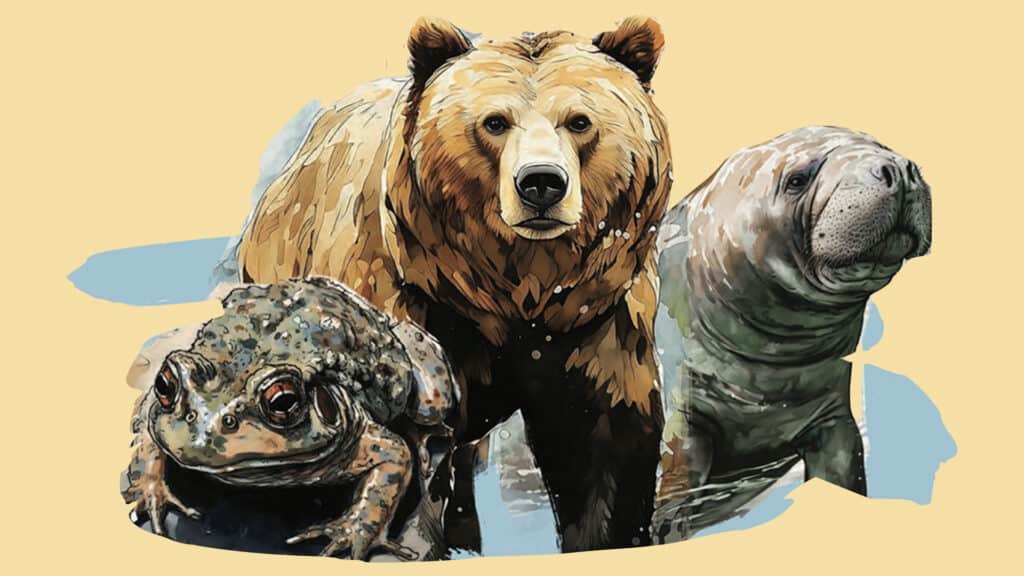
Conclusion
Fifty years after Congress passed the Endangered Species Act, its record remains mixed. While nearly all listed species have avoided extinction, only a tiny proportion have recovered and come off the list. The vast majority languish on the endangered species list, facing ongoing risks without appreciably improving their status. For the act to accomplish its aims, it must do a better job of achieving its ultimate goal of recovering threatened and endangered species
A major challenge is that the Endangered Species Act is heavy on stick and light on carrot. The act generally penalizes landowners, conservationists, local communities, and states who encounter listed species, rather than encouraging them to work together to recover them. This punitive approach turns at-risk wildlife and their habitats into liabilities rather than assets.
There is a better way. The ideas outlined in this report would accelerate the recovery of endangered species by getting the incentives right, both by removing the regulatory disincentives that undermine species recovery and by encouraging proactive efforts. Ultimately, making at-risk species an asset rather than liability will motivate the landowners, states, and federal agencies who already steward habitat for them to have a real interest in their recovery. As we look ahead to the next 50 years, getting these incentives right will ensure the Endangered Species Act enables species not just to survive but to thrive.









